Birds of brown are a group of birds known for their earthy colors, which come in various shades of brown and tan. They can be found in many different parts of the world and can be seen in a variety of habitats, from forests and fields to urban areas and wetlands.
They are highly adaptable birds and can live in almost any kind of environment. These birds are also known for their unique songs and calls, which vary in complexity depending on the species.
Whether you’re an avid birder or just a casual observer, you can appreciate the beauty of these birds and the important role they play in our environment.
1. Brown Thrasher
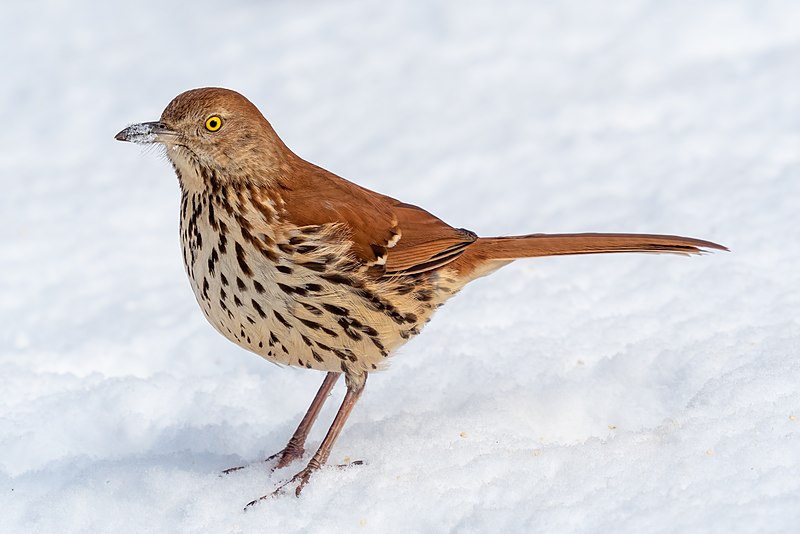
The brown thrasher is a member of the Mimidae family, along with catbirds and mockingbirds. It is found throughout much of North America in the eastern and central United States as well as southern and central Canada.
The only place that it does not inhabit is west of the Rockies or in Central Texas.
This bird can be identified by its reddish-brown back feathers, white underbelly and long tail that often drags behind it when walking on the ground hunting for food like insects, fruits or berries.
Its loud song consists of over 2000 different notes.
Brown Thrashers are known to build nests close to human activity which makes them easily accessible for observation making them a popular backyard species among many birdwatchers.Scientific classification:
| Kingdom | Animalia |
| Phylum | Chordata |
| Class | Aves |
| Order | Passeriformes |
| Family | Mimidae |
| Genus | Toxostoma |
| Species | T. rufum |
2. Brown-Headed Cowbird
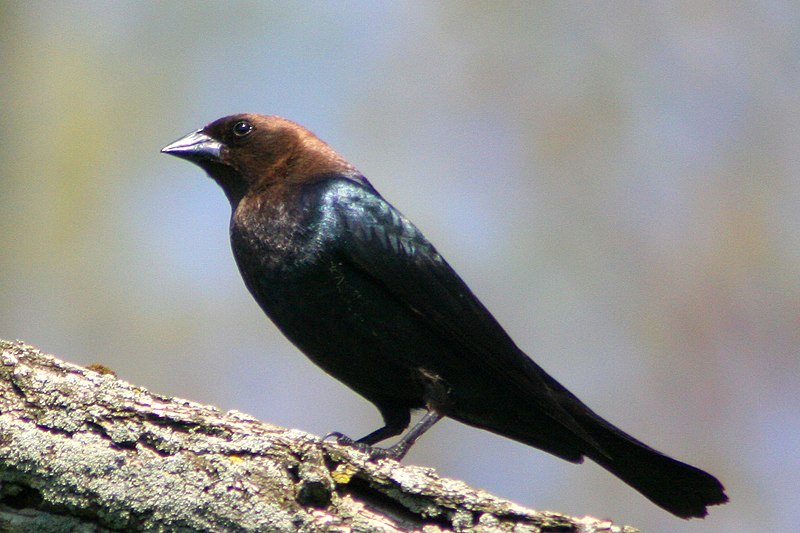
The Brown-headed Cowbird is a small, obligate brood parasitic icterid native to temperate and subtropical North America. It has a brown head with glossy black plumage on the body, wings and tail feathers.
During summer months it can be found in prairies, grasslands as well as open wooded areas but during winter they migrate southwards towards the United States of Mexico for warmer climate.
They are mainly insectivorous birds which feed on insects like caterpillars or beetles but also consume some grains too.
The female bird lays its eggs in nests of other species who then incubates them until hatching time thus leaving their own chicks uncared for by themselves.Scientific classification:
| Kingdom | Animalia |
| Phylum | Chordata |
| Class | Aves |
| Order | Passeriformes |
| Family | Icteridae |
| Genus | Molothrus |
| Species | M. ater |
3. Wrens
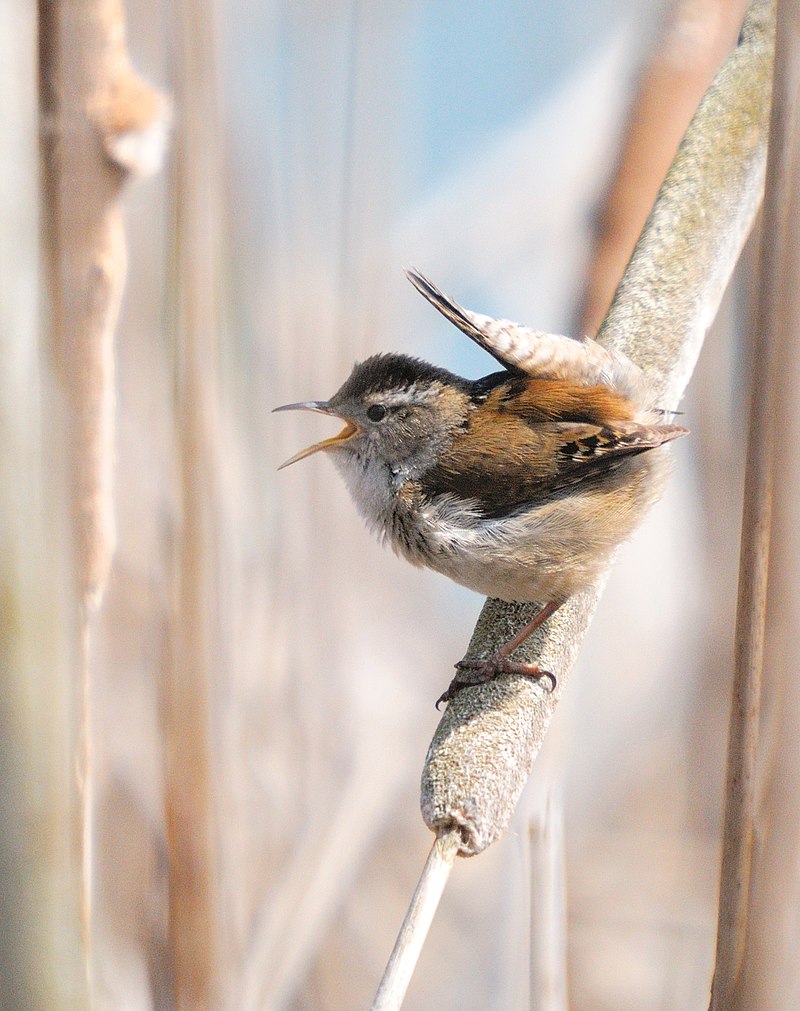
Wrens are a family of small brown passerine birds found mainly in the Americas. They are considered one of the most abundant bird species, with 88 known varieties divided into 19 genera.
The Eurasian wren is the only type that inhabits Europe and other parts of the Old World, where it’s commonly referred to simply as “wren.”
This species has been given its name due to similar-looking unrelated birds living elsewhere such as New Zealand wrasses.
Wrens have tiny bodies with thin bills and long tails which they often hold upright for hours at a time while singing their loud cheery songs from treetops or low shrubs.
Their diet consists mostly of insects but can also include fruits and seeds depending on availability in their habitat range.Scientific classification:
| Kingdom | Animalia |
| Phylum | Chordata |
| Class | Aves |
| Order | Passeriformes |
| Superfamily | Certhioidea |
| Family | Troglodytidae Swainson, 1832 |
4. Cowbirds
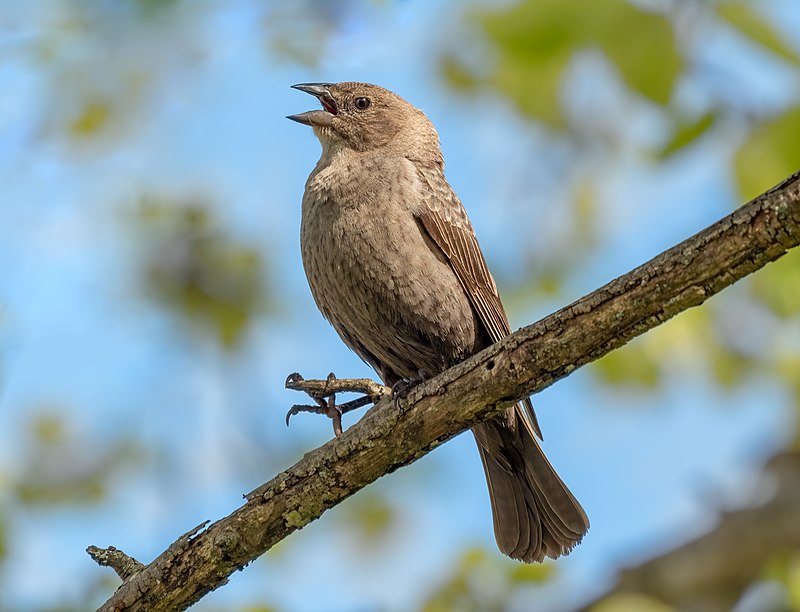
Cowbirds are a type of bird belonging to the genus Molothrus, in the family Icteridae. Native to North and South America, they lay their eggs in other species’ nests as obligate brood parasites.
The name derives from Ancient Greek mōlos meaning “grinder”, referring to its strong bill for crushing seeds. They vary greatly in size ranging from 7-20cm long with an average wingspan of 30 cm wide.
Their coloring is typically black or dark grey though some have brownish hues while others may be more brightly colored such as yellow or white on the head and chest area.
All cowbird species use vocalizations that can sound like human singing when they mate during mating season.Scientific classification:
| Kingdom | Animalia |
| Phylum | Chordata |
| Class | Aves |
| Order | Passeriformes |
| Family | Icteridae |
| Genus | Molothrus Swainson, 1832 |
Also Featured In: Flocks Birds around Us,
5. House Finch

The House Finch is a species of finch native to western North America and has been introduced in the eastern half of the continent as well as Hawaii.
It’s an average-sized finch with adults measuring 12.5 – 15 cm (5 – 6 inches) long and having wingspans between 20 – 25 cm (8 – 10 inches).
The upperparts are brown, while its underparts range from pale grayish white to yellow depending on subspecies.
Its face is streaked or spotted with reddish coloration; males typically have brighter plumage than females due to sexual dimorphism.
They’re mostly found near human habitations such as farms and gardens where they feed on grains, fruits, insects etc., making them very popular among birders who want something colorful for their backyard.Scientific classification:
| Kingdom | Animalia |
| Phylum | Chordata |
| Class | Aves |
| Order | Passeriformes |
| Family | Fringillidae |
| Subfamily | Carduelinae |
| Genus | Haemorhous |
| Species | H. mexicanus |
6. Song Sparrow

The Song Sparrow (Melospiza melodia) is a small, yet abundant bird found in North America.
They have brown upperparts with dark streaks and are white underneath, complete with a distinct dark brown spot on the breast.
Their cap is also brown and long roughed feathers can be seen sprouting from their neck area.
This sparrow species is highly variable and adaptable to many different environments including dry brush land, wetlands or open fields.
It has been noted that adult song sparrows will sing even during winter months when other birds remain quiet.
These energetic little animals make for great backyard companions as they flit about singing their lovely melodies.Scientific classification:
| Kingdom | Animalia |
| Phylum | Chordata |
| Class | Aves |
| Order | Passeriformes |
| Family | Passerellidae |
| Genus | Melospiza |
| Species | M. melodia |
7. House Wren
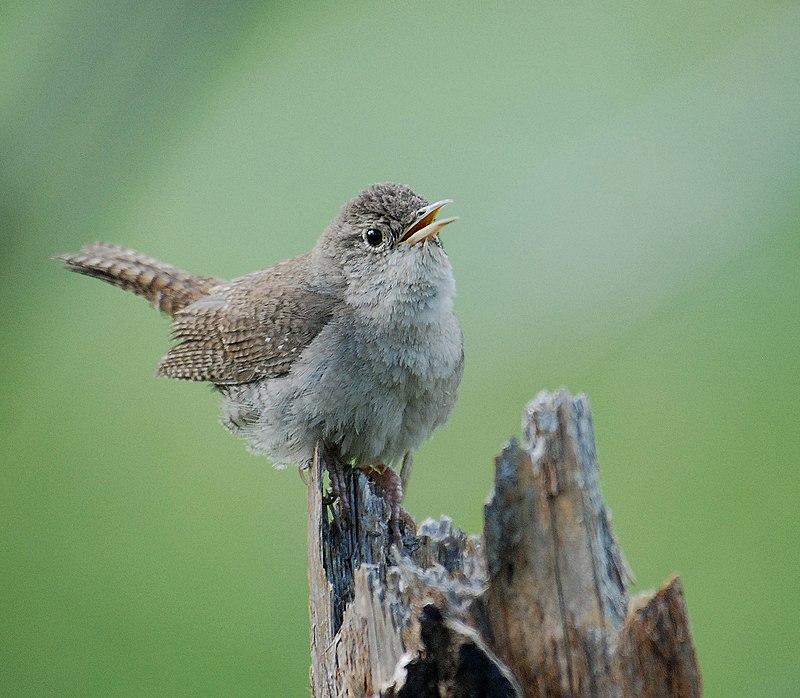
The House Wren is a small bird of the wren family found from Canada to South America. It’s quite common in suburban areas and is one of the most widely distributed native birds in North and South America.
Its taxonomy can be complicated, with some subspecies groups considered separate species.
The House Wren has a brown back, grey head, white eyebrow stripes, light chestnut belly and buffy flanks.
They often inhabit old or abandoned buildings as well as shrublands near fields or open woods for nesting sites.
During breeding season they are highly territorial so make sure you create an inviting environment if you wish to invite them into your yard.Scientific classification:
| Kingdom | Animalia |
| Phylum | Chordata |
| Class | Aves |
| Order | Passeriformes |
| Family | Troglodytidae |
| Genus | Troglodytes |
| Species | T. aedon |
8. White-Throated Sparrow

The White-throated Sparrow is a small passerine bird of the New World sparrow family Passerellidae.
It has distinctive yellow and black stripes on its head, white throat and chest with grey back and wings, along with light brown legs.
The scientific name “Zonotrichia albicollis” comes from Ancient Greek for ‘band’ (ζώνη) referring to its distinctive striped crown, and Latin for ‘white neck’ (albus collum).
These birds are usually found in wooded areas such as coniferous forests or deciduous habitats in North America where they feed mainly on insects during summer months; transitioning to seeds during winter.
They build their nests near ground level using grasses, twigs or moss lined with feathers.
White-throated Sparrows may be solitary but also form flocks when migrating southward each fall season which typically occurs over mid-late October through November depending on location within range.Scientific classification:
| Kingdom | Animalia |
| Phylum | Chordata |
| Class | Aves |
| Order | Passeriformes |
| Family | Passerellidae |
| Genus | Zonotrichia |
| Species | Z. albicollis |
9. American Robin

The American robin is a migratory bird, belonging to the true thrush genus and Turdidae family.
It was named after its European counterpart due to the similar reddish-orange breast they both possess; however, they are not related closely.
This species can be seen through most of North America during winter months, as well as in parts of Mexico and Central America where it also breeds.
They have plump bodies with gray upperparts and white underparts that vary from yellow on their throats down to orange toward their bellies.
Robins feed on fruits such as berries or insects like worms which makes them an important part of ecosystems by helping disperse seeds naturally throughout these areas.Scientific classification:
| Kingdom | Animalia |
| Phylum | Chordata |
| Class | Aves |
| Order | Passeriformes |
| Family | Turdidae |
| Genus | Turdus |
| Species | T. migratorius |
10. Chipping Sparrow
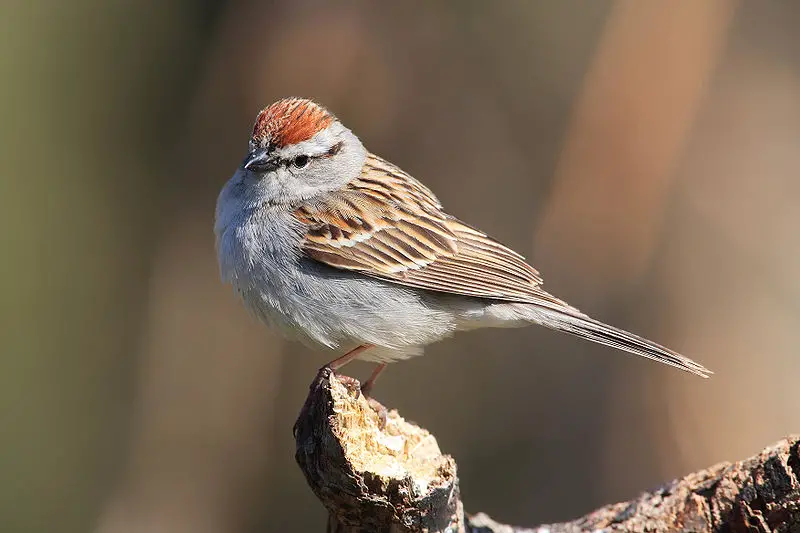
The Chipping Sparrow is a small passerine bird found across most of North America. It has two subspecies, the eastern and western chipping sparrows which migrate seasonally to overwinter in warmer climates.
The birds are grey above with white underparts, have a rufous cap with black stripes and large eyes surrounded by light brown feathers.
They feed mainly on seeds but can also be seen eating insects during breeding season when raising their young chicks.
These intrepid little birds live in open grasslands such as prairies or meadows where they build cup-shaped nests in trees or shrubs to raise their young family.
Their cheerful song often sounds like ‘chips’ hence its name; Chipping Sparrow.Scientific classification:
| Kingdom | Animalia |
| Phylum | Chordata |
| Class | Aves |
| Order | Passeriformes |
| Family | Passerellidae |
| Genus | Spizella |
| Species | S. passerina |
11. Cardinal
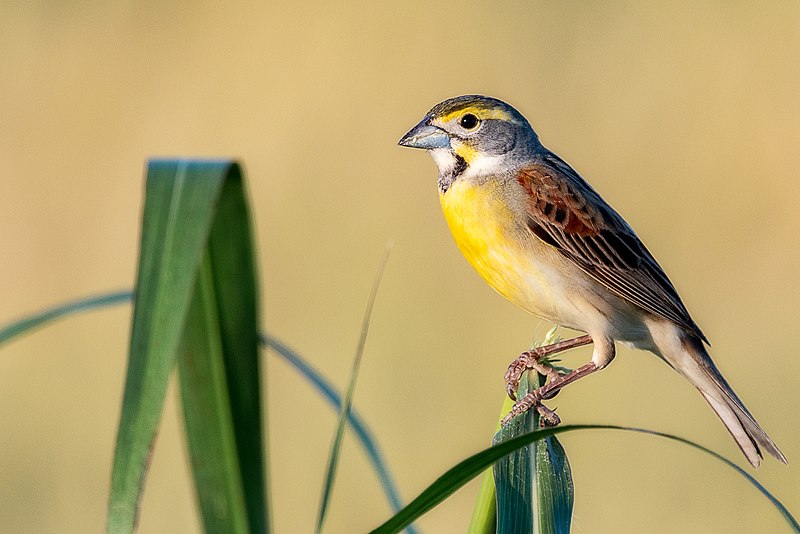
Cardinalidae is a family of passerine birds endemic to the New World that includes cardinals, grosbeaks and buntings.
This large group has great diversity in its members which range from tanager-like Piranga to warbler-like Granatellus.
They are usually distinguished by their bright plumage with reds, oranges and yellows being common among them.
Their strong bills enable them to feed on seeds, fruits and insects as well as other small prey items like lizards or frogs depending upon species.
Cardinals also have loud calls often used for territorial defense and courtship purposes while some can even imitate sounds made by other animals.
These adaptable birds inhabit a variety of habitats across North America making them an important part of many ecosystems there.Scientific classification:
| Kingdom | Animalia |
| Phylum | Chordata |
| Class | Aves |
| Order | Passeriformes |
| Superfamily | Emberizoidea |
| Family | Cardinalidae Ridgway, 1901 |
12. Northern Cardinal

The Northern Cardinal is a beautiful bird, easily identified by its bright red plumage. It can be found in the eastern United States from Maine to Minnesota and south through Mexico and Belize.
Along with its striking colouration, it has a distinctive crest on its head and sharp black facial markings around the eyes.
Despite their small size (measuring 7-9 inches) they are very vocal birds – males sing persistently throughout springtime to attract mates or proclaim their territory.
They typically feed on insects, seeds and fruits but also enjoy suet at backyard bird feeders.
The female is less brightly coloured than her mate but still stands out among other songbirds due to her warm brownish-red feathers.
Cardinals pair for life so you may often see them together in your garden or neighbourhood park.Scientific classification:
| Kingdom | Animalia |
| Phylum | Chordata |
| Class | Aves |
| Order | Passeriformes |
| Family | Cardinalidae |
| Genus | Cardinalis |
| Species | C. cardinalis |
13. White-Crowned Sparrow
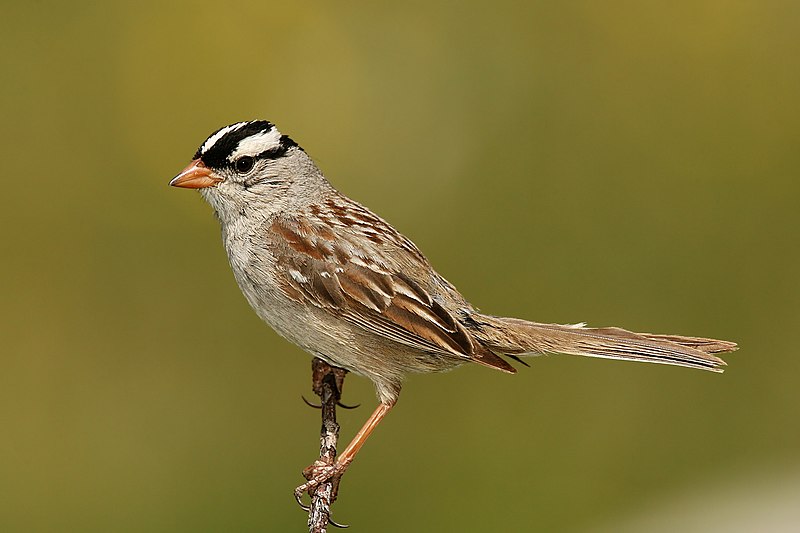
The White-crowned Sparrow is a species of passerine bird native to North America. It has a grey face and black and white streaking on its upper head, making it easy to identify.
This sparrow usually breeds in brushy areas located in the taiga, tundra, Rocky Mountains or Pacific coast regions of North America.
During winter months these birds migrate southward as far as Mexico and California where they can be found living amongst chaparral shrubbery or low bushes near open fields with plenty of seeds nearby.
The diet of this bird consists mainly of insects during summer while they switch over to eating grains like wheat & oats during colder months when bugs are scarce.
They are known for their characteristic chirp which sounds like “Oh sweet Canada Canada” drawing admirers from around the world.Scientific classification:
| Kingdom | Animalia |
| Phylum | Chordata |
| Class | Aves |
| Order | Passeriformes |
| Family | Passerellidae |
| Genus | Zonotrichia |
| Species | Z. leucophrys |
14. Carolina Wren
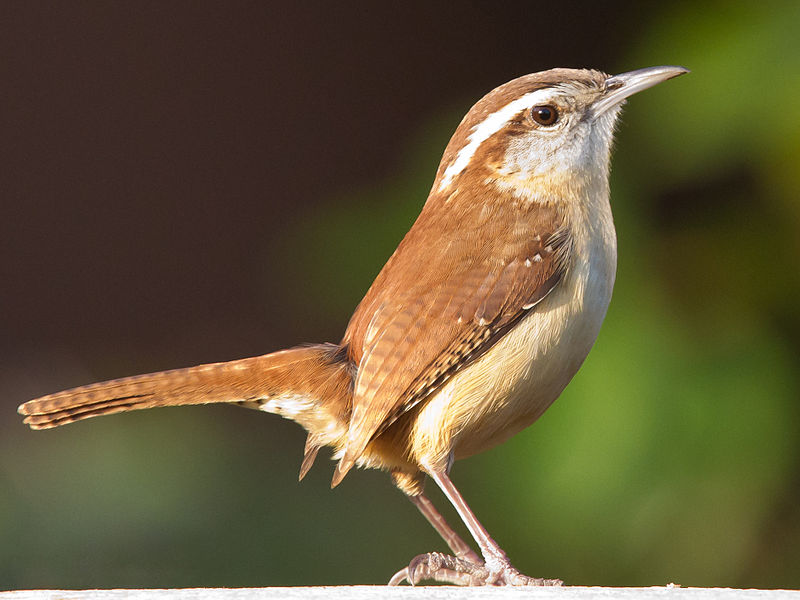
The Carolina wren (Thryothorus ludovicianus) is a medium-sized bird that can be found in the eastern United States, southern Ontario and northeast Mexico.
They typically live in dense shrubbery or thickets near open areas such as gardens, parks and woodland edges.
These birds are quite adaptable when it comes to nesting sites – they will build their nests anywhere from tree cavities to manmade boxes.
Their diet consists of insects, spiders and other invertebrates which they forage for on the ground or among vegetation.
The males have an unmistakable song made up of loud whistles interspersed with trills reminiscent of laughter; you’ll often find these cheerful little birds singing away during early morning hours.Scientific classification:
| Kingdom | Animalia |
| Phylum | Chordata |
| Class | Aves |
| Order | Passeriformes |
| Family | Troglodytidae |
| Genus | Thryothorus Vieillot, 1816[2] |
| Species | T. ludovicianus |
15. Rose-Breasted Grosbeak
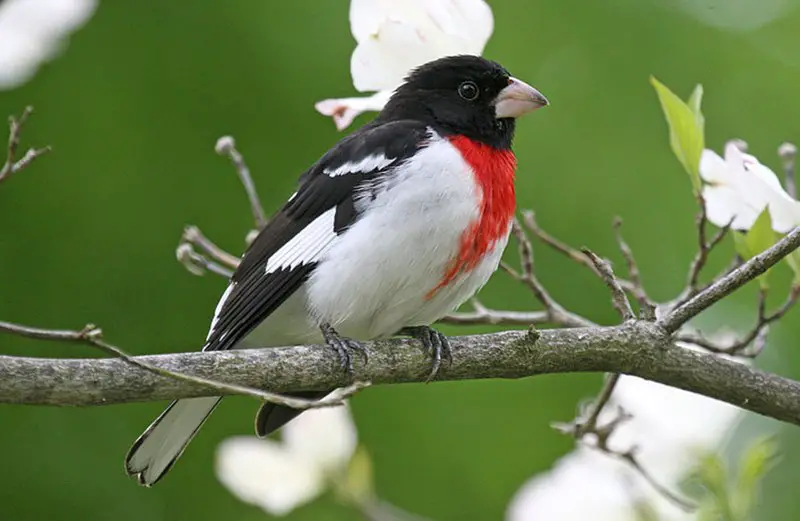
The Rose-breasted Grosbeak is a large, brightly coloured bird belonging to the Cardinal family. Males have black heads and wings, with white breasts boasting a bright rose patch.
Females are more muted in colouring being mostly buffy brown or greyish overall but still featuring the distinctive rose breast patch.The two sexes also exhibit marked sexual dimorphism.
These birds inhabit open woodlands across North America where they feed on seeds gleaned from foliage as well as fruits such as cherries and blueberries during their breeding season which runs from April through August each year.Scientific classification:
| Kingdom | Animalia |
| Phylum | Chordata |
| Class | Aves |
| Order | Passeriformes |
| Family | Cardinalidae |
| Genus | Pheucticus |
| Species | P. ludovicianus |
16. Red-Winged Blackbird

The red-winged blackbird is a beautiful bird found in most of North America and Central America.
Its distinct features include a glossy black body, with white shoulder patches and bright red wing coverts year round.
It prefers wetland habitats such as marshes, ponds, lakeshores and agricultural fields. During breeding season they inhabit grassy areas near water then move south for the winter months.
For food they mainly eat insects but also consume wild fruit or grains.
They are very social birds often seen in large flocks during migration times when their unmistakable “conk-la-ree” call can be heard echoing across the sky.Scientific classification:
| Kingdom | Animalia |
| Phylum | Chordata |
| Class | Aves |
| Order | Passeriformes |
| Family | Icteridae |
| Genus | Agelaius |
| Species | A. phoeniceus |
17. Pine Siskin
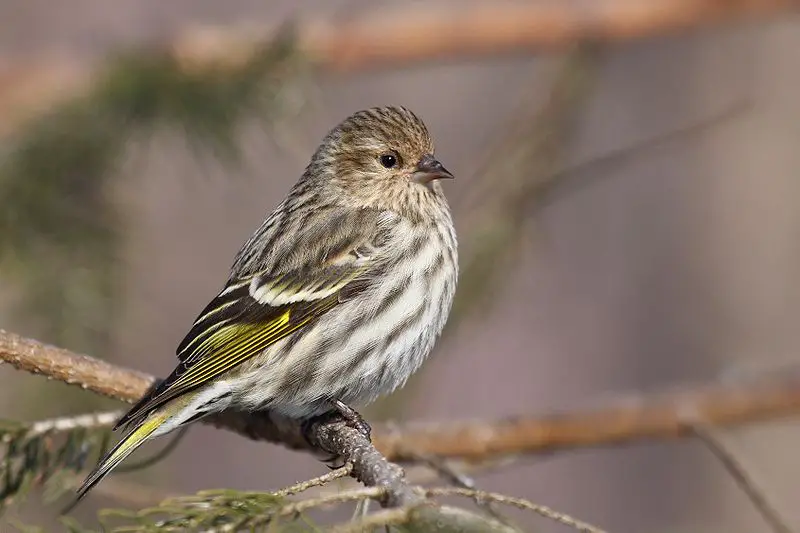
The Pine Siskin is a small bird from the finch family, primarily found in North America. It has an irregular migratory range and was first described by American ornithologist Alexander Wilson in 1810.
The species gets its name pinus, which means “pine-tree” in Latin, due to its frequent presence near coniferous trees.
Pine siskins are known for their yellow wing bars and streaked chests as well as their perky mannerisms when perched on branches or flying around looking for food during colder months.
They feed mostly on seeds of weeds, grasses and other plants but can also be seen consuming insects at times during summertime nesting season.
Its loud calls often alert nearby birds of potential danger while they nest high up among pine tree limbs where predators cannot reach them easily.Scientific classification:
| Kingdom | Animalia |
| Phylum | Chordata |
| Class | Aves |
| Order | Passeriformes |
| Family | Fringillidae |
| Subfamily | Carduelinae |
| Genus | Spinus |
| Species | S. pinus |
18. Brown Creeper
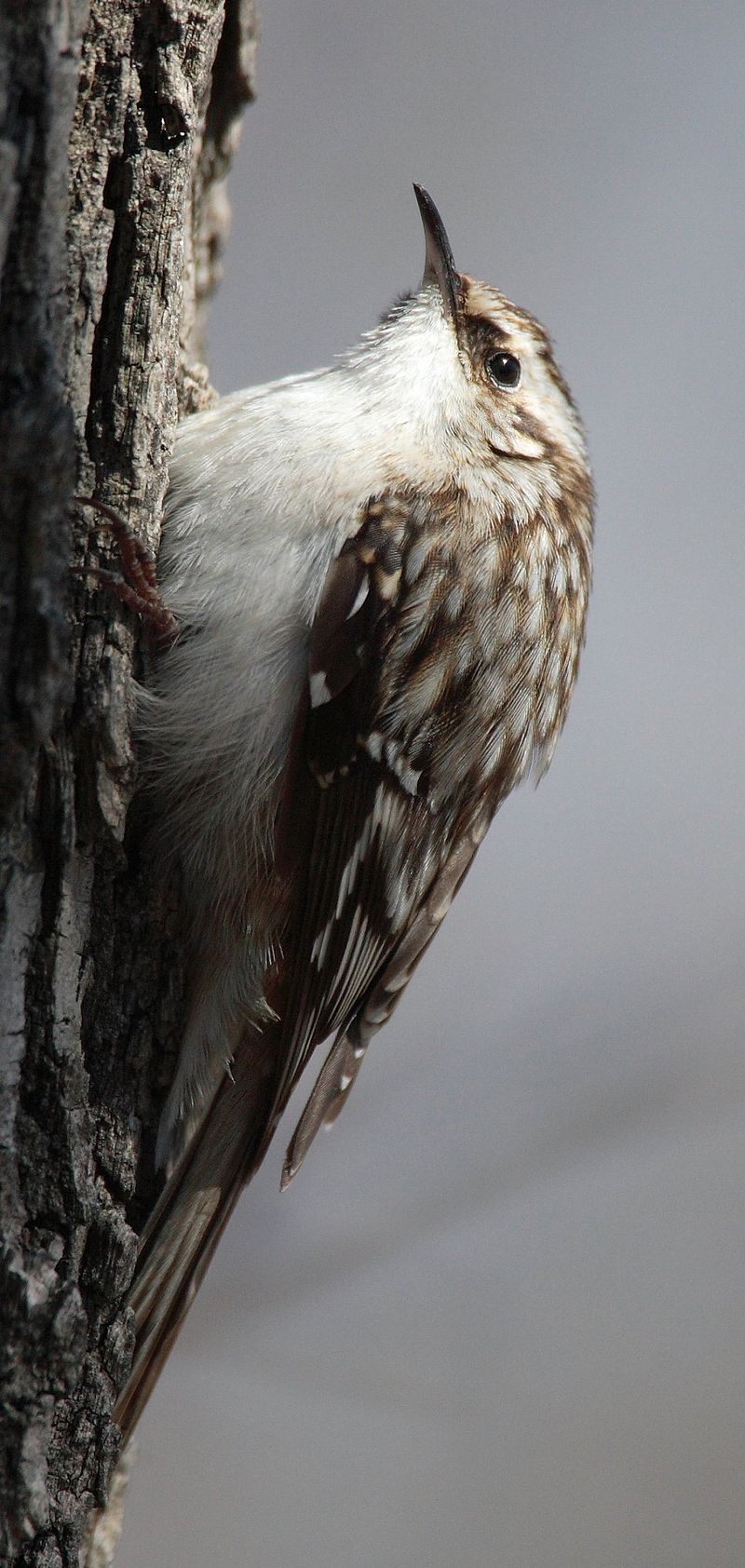
The Brown Creeper is a small songbird belonging to the Certhiidae family and is native to North America. It has brown upperparts with light spotting that resembles tree bark, as well as white underparts.
Its bill is long and thin with a slight downward curve while its tail is also long yet stiff; this helps it creep up trees.
This bird feeds mainly on insects which can be found in crevices of barks or dead plants, thanks to its curved bill which allows it access these hard-to-reach places.
When searching for food they move diagonally upwards around trunks so their camouflage blends in perfectly with the background making them difficult to spot.Scientific classification:
| Kingdom | Animalia |
| Phylum | Chordata |
| Class | Aves |
| Order | Passeriformes |
| Family | Certhiidae |
| Genus | Certhia |
| Species | C. americana |
19. Brown-Headed Nuthatch
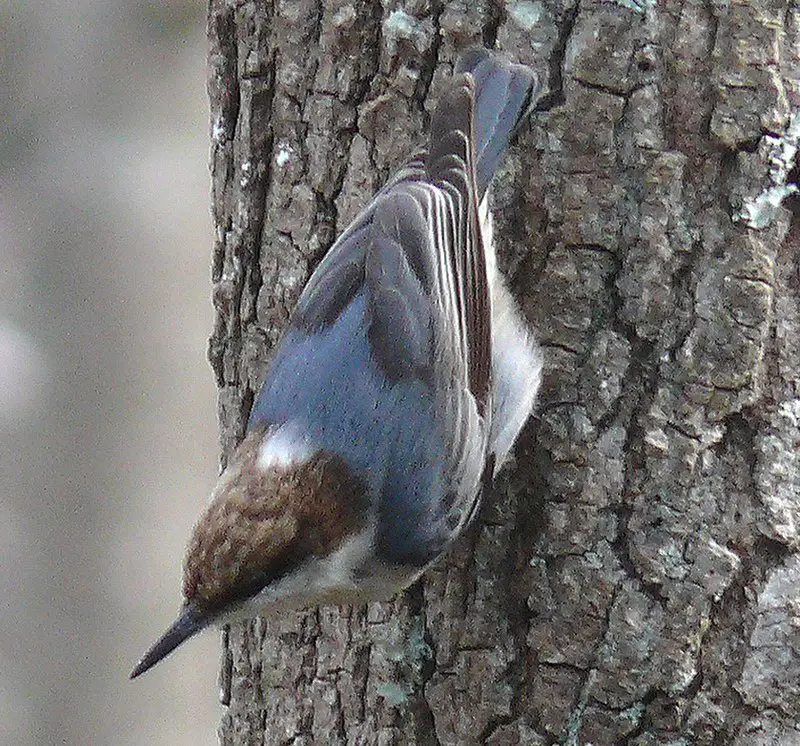
The brown-headed nuthatch is a small songbird native to pine forests in the southeastern US. With its brown head and blue-gray body, it’s easily recognizable.
Recent genetic analyses have revealed low differentiation between northern and southern populations in Florida, yet unfortunately lower genetic diversity among south Florida populations due to habitat fragmentation.
The Bahamas represent an isolated population of this species that may be at risk from human activity or other forms of disturbance such as hurricanes.
Conservation efforts will help ensure the protection of these birds for generations to come.Scientific classification:
| Kingdom | Animalia |
| Phylum | Chordata |
| Class | Aves |
| Order | Passeriformes |
| Family | Sittidae |
| Genus | Sitta |
| Species | S. pusilla |
20. Bewick’s Wren
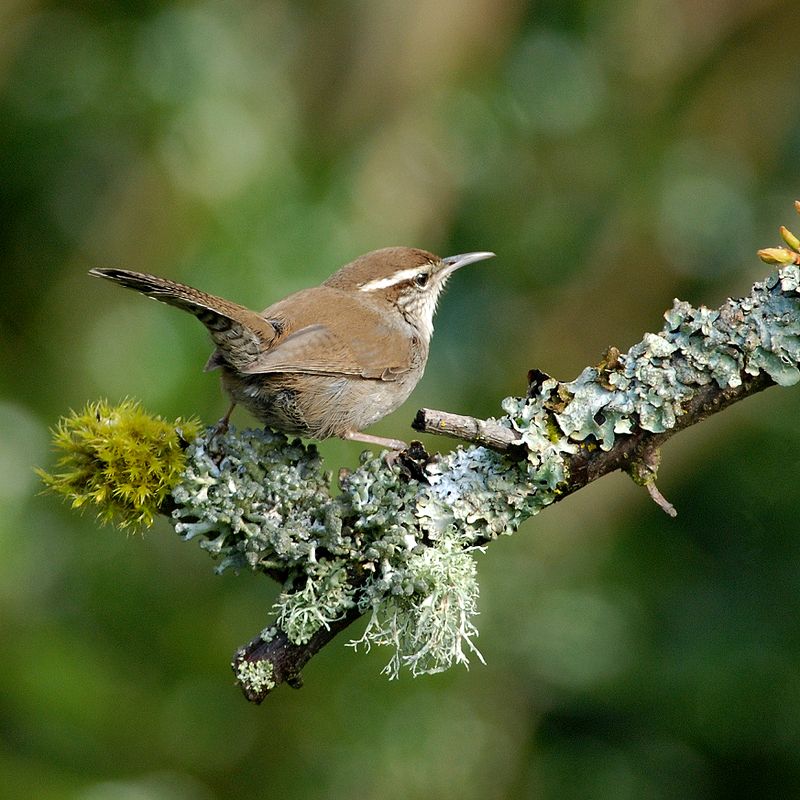
The Bewick’s wren (Thryomanes bewickii) is a small, grey-brown bird native to North America. Measuring at around 14 cm long it has distinctive white markings on its face and tail giving it an attractive appearance.
It can often be found in thickets or scrubby areas as well as urban gardens and parks.
Its song is loud and melodious which makes them popular amongst ornithologists; they are known for their complex vocalisations composed of whistles, clicks, churrs and trills.
The Bewick’s Wren mainly feeds on insects but will also eat fruits if available during the colder months when food may otherwise be scarce.
This species of wren plays an important role in controlling insect populations making them beneficial inhabitants of our environment.Scientific classification:
| Kingdom | Animalia |
| Phylum | Chordata |
| Class | Aves |
| Order | Passeriformes |
| Family | Troglodytidae |
| Genus | Thryomanes P.L. Sclater, 1862 |
| Species | T. bewickii |
21. Wood Thrush
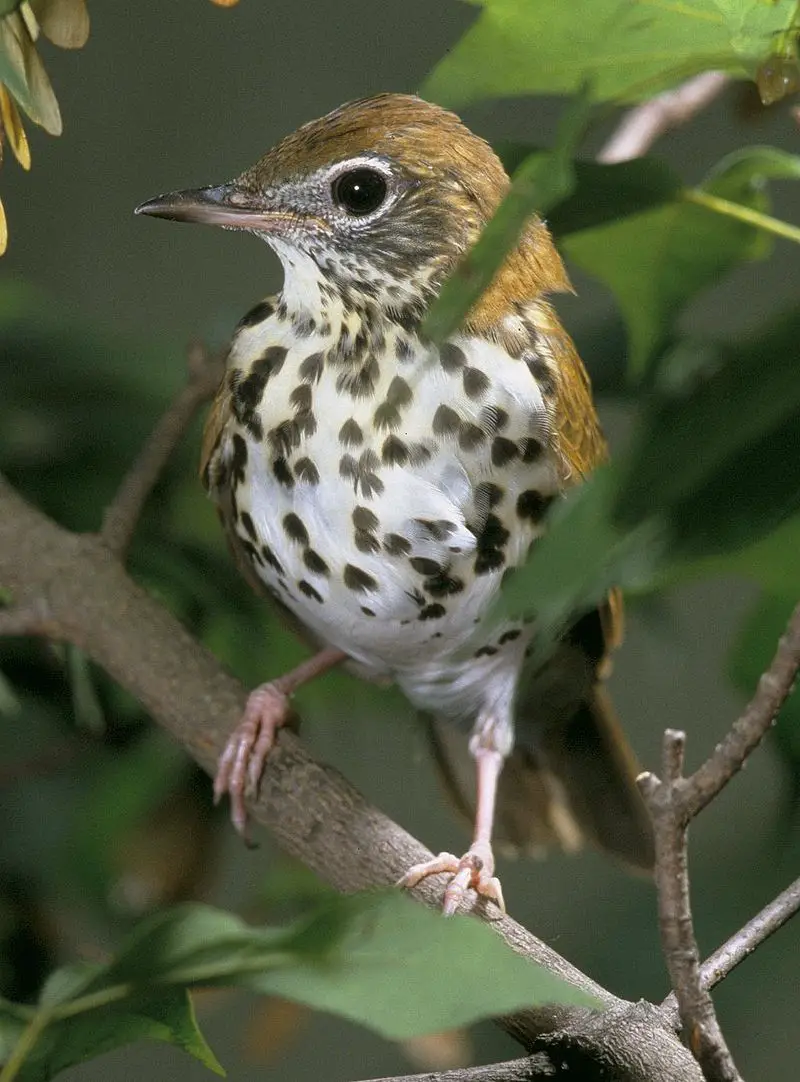
The Wood Thrush is a beautiful bird native to North America, closely related to the American Robin.
It has mottled brown and white upperparts with a spotted breast, buffy sides and flanks, and reddish-brown tail feathers.
This medium-sized thrush prefers wooded areas where it can find its favorite food – insects such as beetles, caterpillars and spiders.
The male’s song is one of the most recognizable sounds in nature; an ethereal mix of flute-like whistles that often echoes through forests on warm summer nights.
The Wood Thrush holds special status as the official bird of Washington D.C., making it even more beloved amongst local residents who take pride in seeing this exquisite species up close.Scientific classification:
| Kingdom | Animalia |
| Phylum | Chordata |
| Class | Aves |
| Order | Passeriformes |
| Family | Turdidae |
| Genus | Hylocichla Baird, 1864 |
| Species | H. mustelina |
22. Typical Thrashers
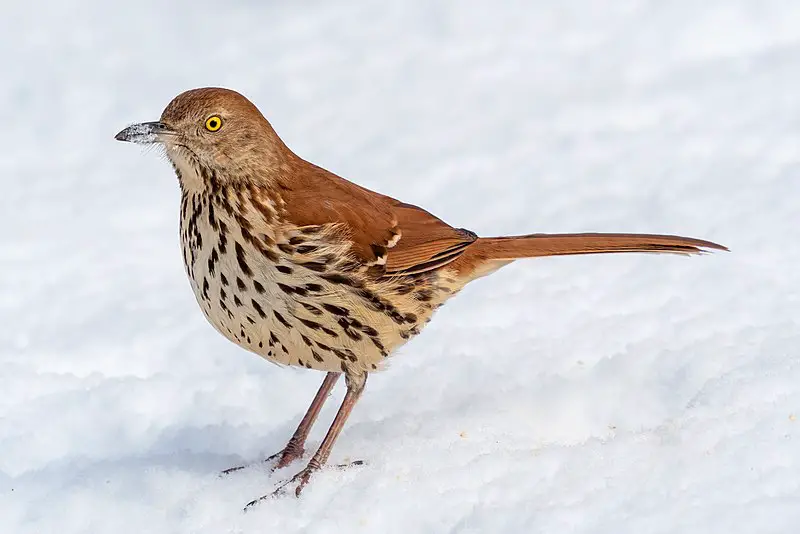
Typical thrashers are members of the Toxostoma genus in the Mimidae family. They measure between 22 and 32 cm long, with a tail as equally or longer than their body length.
Their bill is curved downwards, usually quite long; this trait is also shared by mockingbirds and mulattoes.
Typical thrashers all have grey-brown upperparts combined with white underparts, although some species may be more colorful such as those belonging to the Californian group which has black wings patterned with spots or bars of reds and yellows on its underside feathers.
These birds can often be found amongst dense vegetation where they feed mainly on insects but will occasionally eat fruits when available too.Scientific classification:
| Kingdom | Animalia |
| Phylum | Chordata |
| Class | Aves |
| Order | Passeriformes |
| Family | Mimidae |
| Genus | Toxostoma Wagler, 1831 |
23. American Tree Sparrow
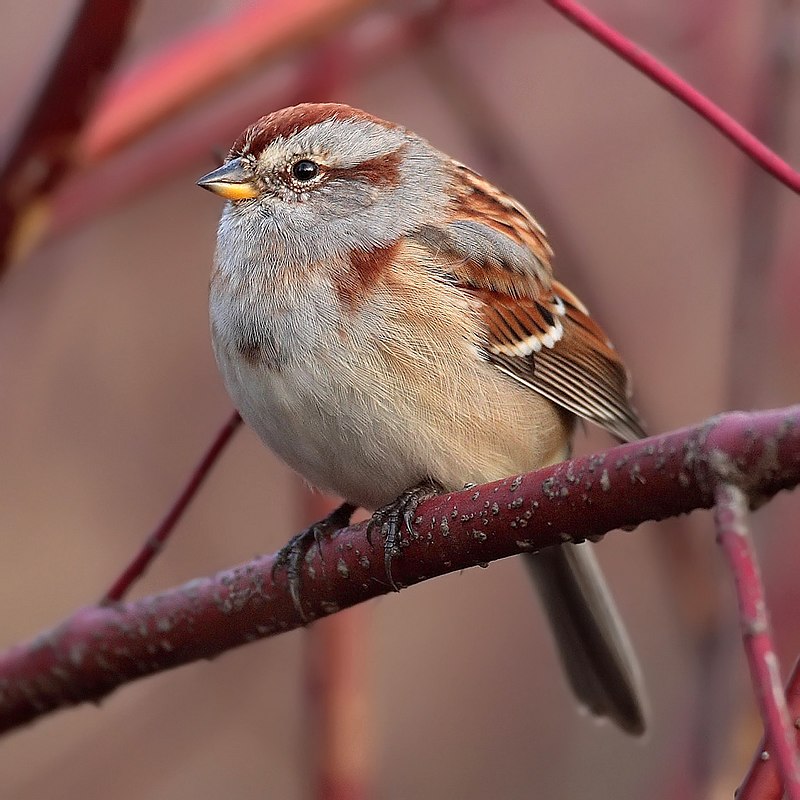
The American tree sparrow, also known as the winter sparrow, is a medium-sized New World bird. It has an attractive rusty cap and grey underparts with a small dark spot on its chest.
Its back is rust colored and striped with lighter shades of brown while its wings have various shades of browns.
These birds are usually found in open areas such as grasslands or marshland during spring migration and can form large flocks when seeking food sources like seeds, insects or berries.
They nest in shrubs or trees near water sources but rarely do so far away from human settlements due to their dependence on supplementary foods provided by humans.
The American Tree Sparrow is a delightful sight for any nature enthusiast.Scientific classification:
| Kingdom | Animalia |
| Phylum | Chordata |
| Class | Aves |
| Order | Passeriformes |
| Family | Passerellidae |
| Genus | Spizelloides Slager & Klicka, 2014 |
| Species | S. arborea |
24. Long-Billed Thrasher
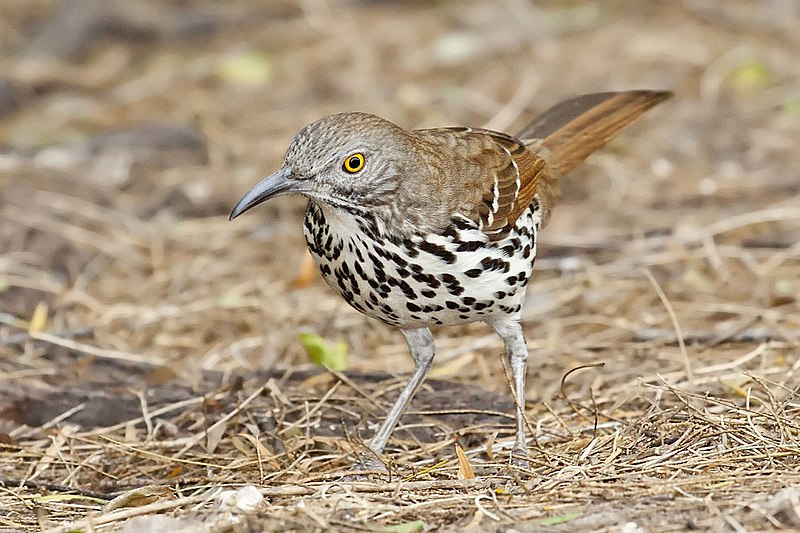
The Long-billed Thrasher is a medium-sized songbird found in South Texas and eastern Mexico.
It has similar features to the Brown Thrasher, such as its calls, appearance and behaviors; although they do not share overlapping ranges except during winter when the Brown Thrasher will reside temporarily in northern areas of where the Long-billed resides.
This species boasts an impressive long bill for probing into ground cover looking for insects, fruits and other food sources – this also serves well when singing its loud melodious songs from elevated perches.
The mottled brown plumage allows them camouflage amongst dense shrubs or trees making it harder to detect by predators.
When nesting season arrives these thrashers can become quite territorial defending their nests fiercely against intruders.Scientific classification:
| Kingdom | Animalia |
| Phylum | Chordata |
| Class | Aves |
| Order | Passeriformes |
| Family | Mimidae |
| Genus | Toxostoma |
| Species | T. longirostre |
Also Featured In: Birds You’ll Find in South Texas , Birds You’ll Find in the Rio Grande Valley
25. Golden-Crowned Sparrow
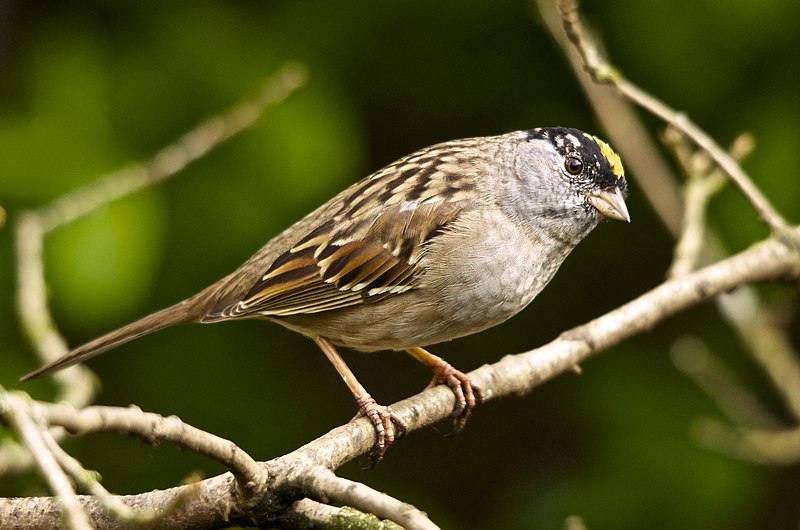
The golden-crowned sparrow is a large New World bird found in the western part of North America. It belongs to the genus Zonotrichia, made up of five species and has no subspecies.
This bird is closely related to the white-crowned sparrow as studies show their mitochondrial DNA evolves at a similar rate.
The most recognizable feature on this beautiful creature are its distinctive yellow stripes near its forehead that appear almost like an orange crown when seen from afar.
Its plumage can range from grey browns in winter months, to dull yellows and oranges during breeding season which typically occurs between April and July.
These birds are often seen foraging through leaf litter or along grassy fields looking for seeds, insects and berries to eat while they sing sweet melodies throughout their habitat.Scientific classification:
| Kingdom | Animalia |
| Phylum | Chordata |
| Class | Aves |
| Order | Passeriformes |
| Family | Passerellidae |
| Genus | Zonotrichia |
| Species | Z. atricapilla |
26. Brown Booby
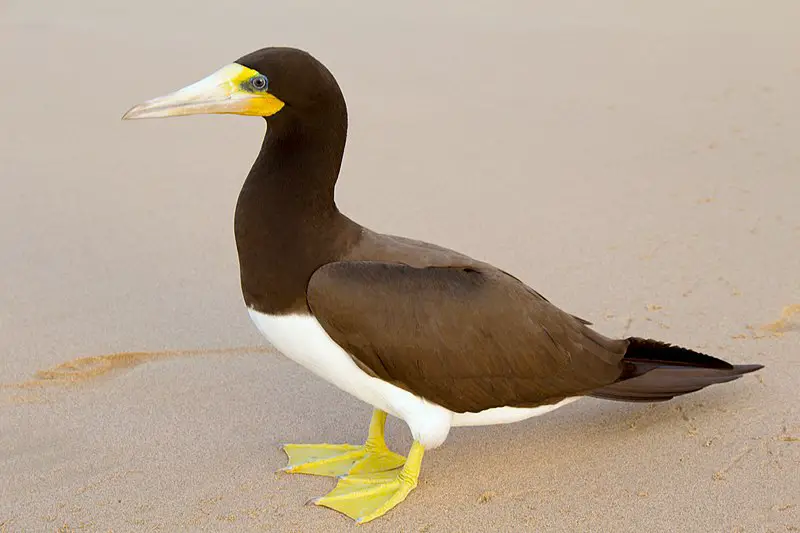
The Brown Booby is a large, seabird from the booby family Sulidae. It has a pantropical range and can be found in many areas of the world.
This bird lives in flocks and forages by plunging into shallow waters to catch small fish that are driven near the surface by predators or storms.
The brown booby is known for its short wings which make it highly maneuverable when hunting; this allows it to pursue prey quickly with sudden turns and dives.
Its diet also includes squid, crustaceans, eggs of other birds, as well as scraps from boats or ships they may come across while flying around coastlines.
They sometimes rest on floating objects during their long flights over open water between islands or continents.Scientific classification:
| Kingdom | Animalia |
| Phylum | Chordata |
| Class | Aves |
| Order | Suliformes |
| Family | Sulidae |
| Genus | Sula |
| Species | S. leucogaster |
27. Swamp Sparrow
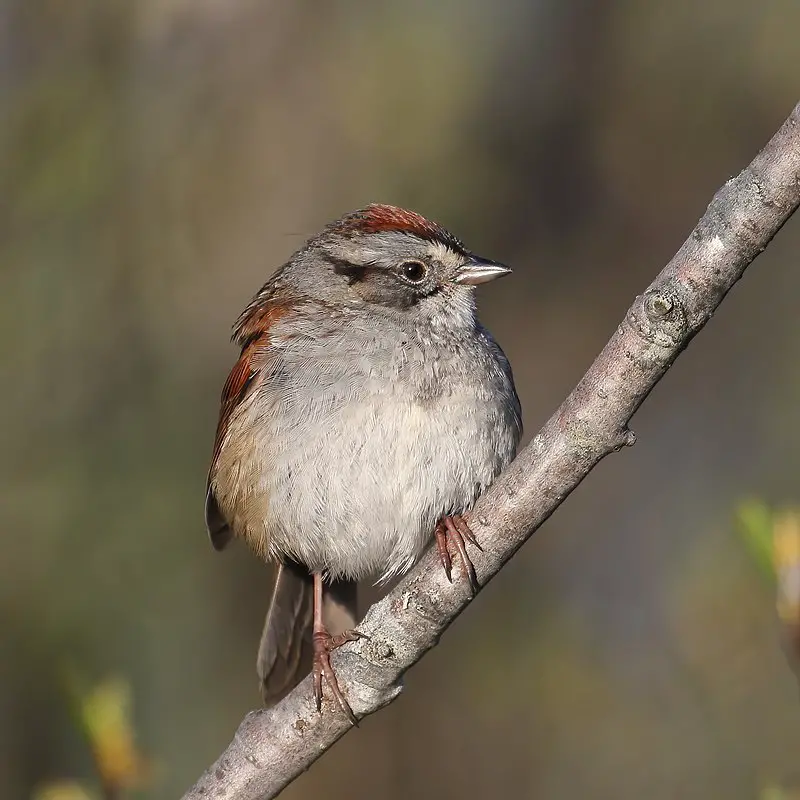
The Swamp Sparrow is a medium-sized bird found in the New World, closely related to the Song Sparrow.
It has rusty and buff streaked upperparts with an unstreaked gray breast, light belly, white throat and striking rusty wings.
The male’s head features a rust-coloured cap while both genders have grey faces with dark lines through their eyes.
Their bills are short and conical in shape which helps them feed on seeds as well as grains easily from ground or low vegetation.
They usually appear solitary but can also be seen foraging together near waterbodies such as swamps or marshes during migration season.Scientific classification:
| Kingdom | Animalia |
| Phylum | Chordata |
| Class | Aves |
| Order | Passeriformes |
| Family | Passerellidae |
| Genus | Melospiza |
| Species | M. georgiana |
28. Eastern Phoebe
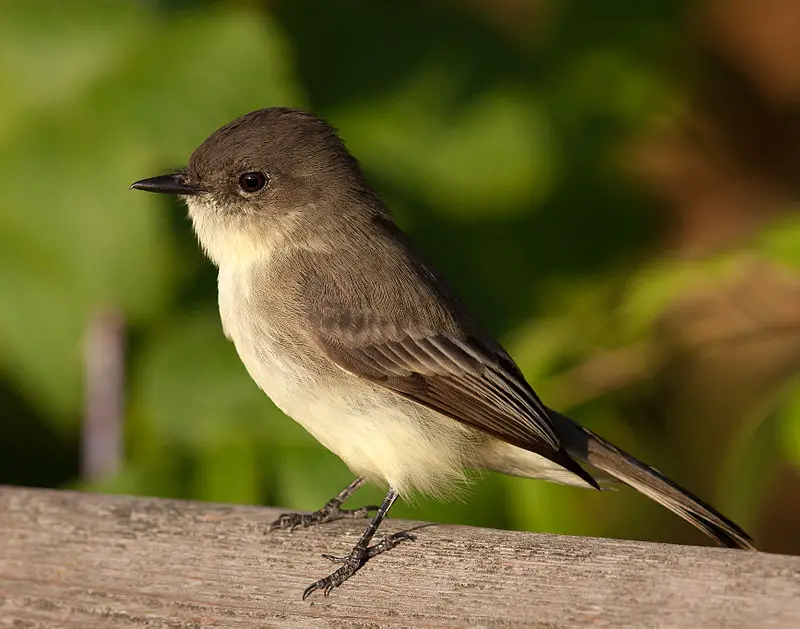
The Eastern Phoebe is a small passerine bird belonging to the genus Sayornis. It gets its name from Charles Lucien Bonaparte’s Muscicapa saya, and Ancient Greek ornis meaning “bird”.
The species’ alternative name ‘Phoebe’ comes from the Roman moon-goddess Diana, but also has been said to imitate their call.
Measuring up to 16 cm in length with a wingspan of 25–30 cm, they have grayish brown upperparts and pale underparts.
They are found near streams, woodlands and open fields where they hunt for insects such as flies, bees wasps etc., often catching them midair or by sallying out from perchs like branches or fences.
These birds make shallow cup nests made of grasses lined with mud which are built on cliffs ledges walls buildings bridges trees etc..
All in all this beautiful little bird is an interesting addition wherever you find it.Scientific classification:
| Kingdom | Animalia |
| Phylum | Chordata |
| Class | Aves |
| Order | Passeriformes |
| Family | Tyrannidae |
| Genus | Sayornis |
| Species | S. phoebe |
29. Great Crested Flycatcher
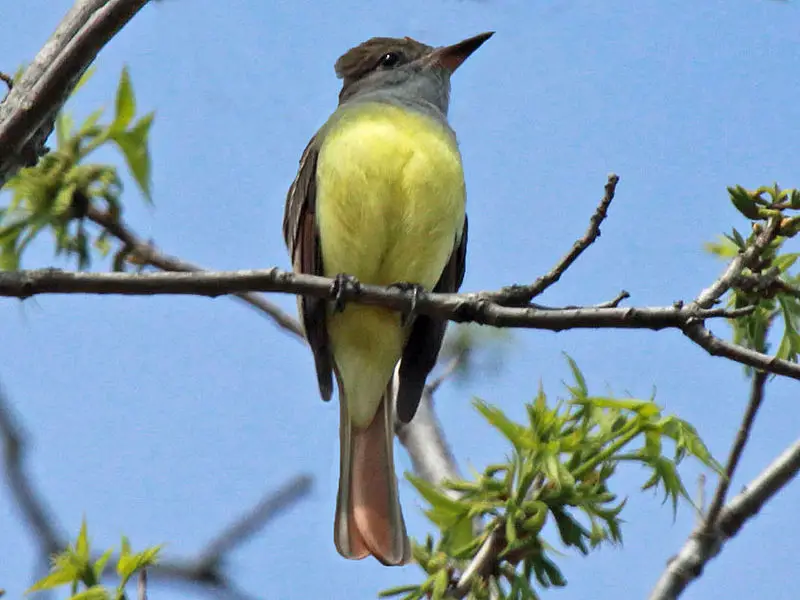
The Great crested flycatcher is a large insect-eating bird belonging to the tyrant flycatcher family.
It has an extensive range across North America, inhabiting most of the eastern and midwestern parts of the continent. They are usually found in treetops but rarely come down to ground level.
Adults measure around 7 inches long with wingspans up to 12 inches wide and they have grayish brown heads with yellow throats and upper breasts while their backs tend to be olive green or grey mixed with black spots on some species.
Their tails are broad, reaching lengths up 8 inches long, often being cocked when perched as they search for insects below them in trees or shrubs.
The males also possess a crest which adds even more splash of colour during mating season.Scientific classification:
| Kingdom | Animalia |
| Phylum | Chordata |
| Class | Aves |
| Order | Passeriformes |
| Family | Tyrannidae |
| Genus | Myiarchus |
| Species | M. crinitus |
30. Field Sparrow
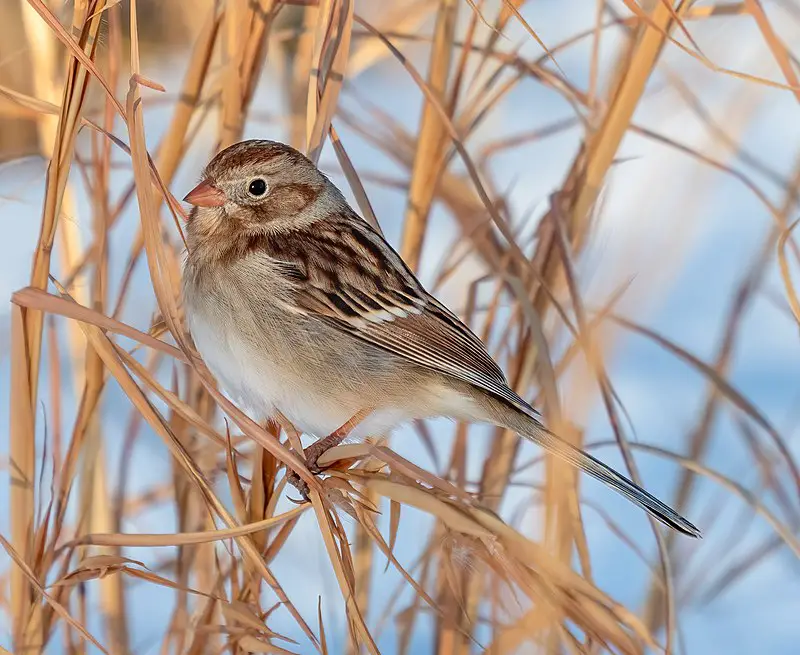
The Field Sparrow is a small bird that can be found across North America. It has a gray head with rust-colored crown and white eye-ring, while its upper parts are brown streaked with black and buff feathers.
Its breast is buff colored, belly white, and the tail forked. There are two color morphs of this species; one being darker in color than the other.
They measure about 140 mm long and weigh 12.5 grams on average; feeding primarily on seeds from grasses or weeds as well as insects during summer months.
The field sparrow’s song is often described as sweet whistles which it sings from an exposed perch like fence posts or trees tops.Scientific classification:
| Kingdom | Animalia |
| Phylum | Chordata |
| Class | Aves |
| Order | Passeriformes |
| Family | Passerellidae |
| Genus | Spizella |
| Species | S. pusilla |
31. Treecreepers
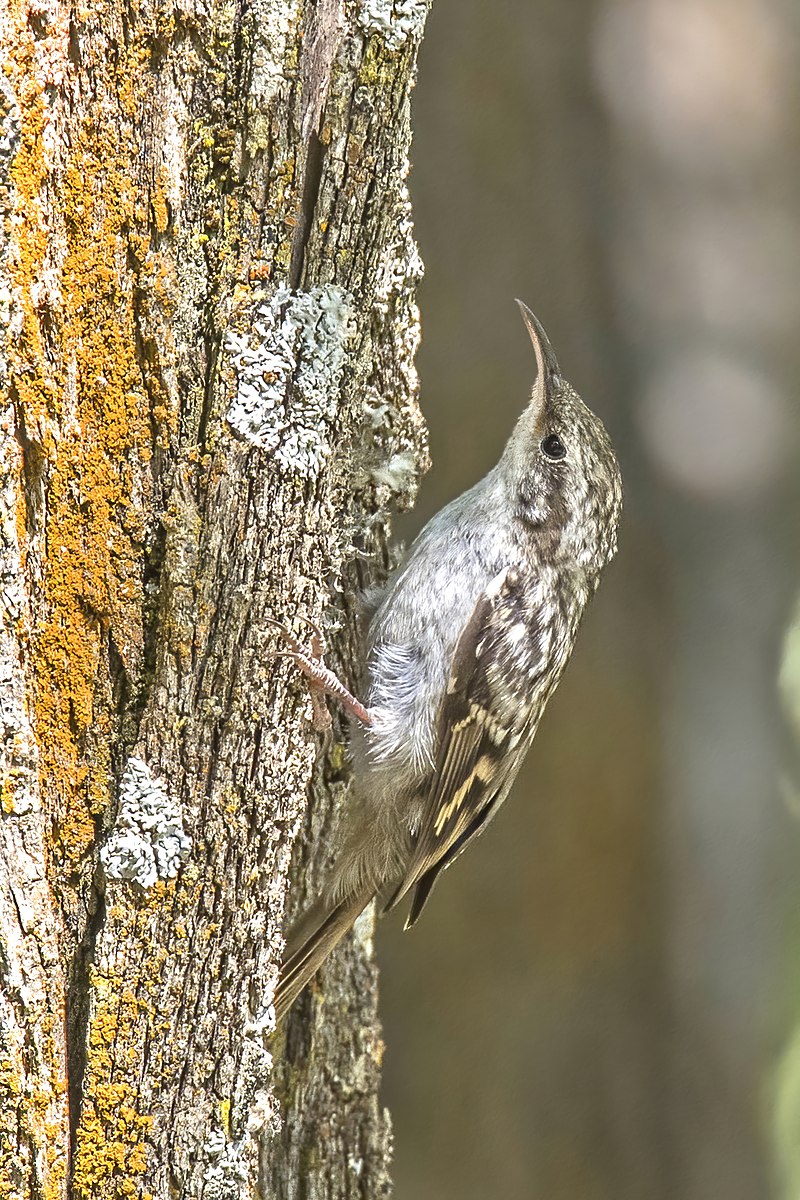
Treecreepers are small passerine birds found in wooded areas of the Northern Hemisphere and sub-Saharan Africa.
They have dull colored plumage, long curved bills, stiff tails and strong feet that help them to climb up tree trunks while searching for food such as insects and spiders.
The two genera Certhia and Salpornis include eleven species which can be identified by their distinct call – a high pitched ‘tsee-tsit’.
Treecreepers build cup shaped nests on trees usually near the base or middle trunk using mosses, lichens, grasses with leaves inside them to provide insulation from cold temperatures.
These birds also use bark crevices during winter months when they shelter in groups together against extreme weather conditions.Scientific classification:
| Kingdom | Animalia |
| Phylum | Chordata |
| Class | Aves |
| Order | Passeriformes |
| Superfamily | Certhioidea |
| Family | Certhiidae Leach, 1820 |
32. California Towhee
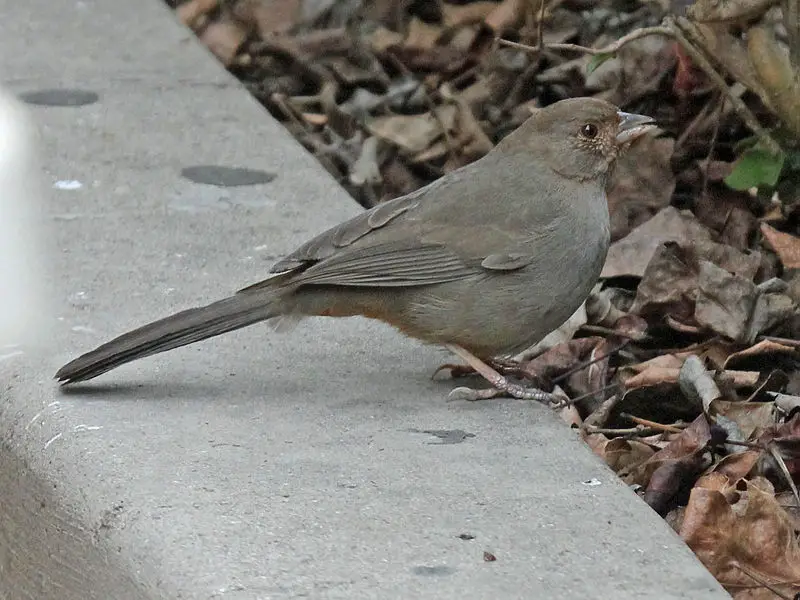
The California towhee (Melozone crissalis) is a medium-sized bird belonging to the family Passerellidae.
It can be found in coastal regions of Oregon, California and Baja California Sur in Mexico.
This species has been subject to taxonomic debate – some authors place it within Fringillidae instead.
The male Californian towhee are easily identified by their greyish brown plumage with black streaks on its back, tail and wings; while females have duller colors than males but still retain the same patterned feathering as them.
Additionally, they possess an orange-colored bill and legs which adds a pop of color to their otherwise dusky appearance.Scientific classification:
| Kingdom | Animalia |
| Phylum | Chordata |
| Class | Aves |
| Order | Passeriformes |
| Family | Passerellidae |
| Genus | Melozone |
| Species | M. crissalis |
33. Common Yellowthroat

The Common Yellowthroat is a small, New World Warbler found throughout North America. It has distinctive yellow and black plumage that earned it the nickname “Yellow Bandit” in the Midwest United States.
This species is highly adaptable and can be found inhabiting wetlands, grasslands, shrub-land habitats, as well as suburban areas.
The genus of this bird’s scientific name translates to mean ‘ground’ and ‘small bird’, which are fitting characteristics for such an elusive yet common little creature.
Its diet consists predominantly of insects but may also include other invertebrates like spiders or worms.
Overall the Common Yellowthroat makes an excellent addition to any backyard with its cheerful song.Scientific classification:
| Kingdom | Animalia |
| Phylum | Chordata |
| Class | Aves |
| Order | Passeriformes |
| Family | Parulidae |
| Genus | Geothlypis |
| Species | G. trichas |
34. Brown Shrike
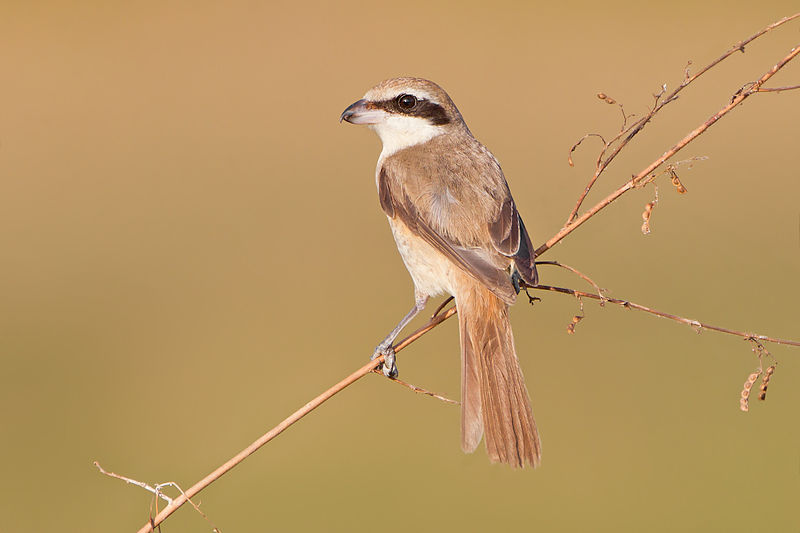
The Brown Shrike is a beautiful bird belonging to the shrike family, found mainly in Asia. It has a distinctive crest which gives it its Latin name ‘cristatus’.
They feed on insects and small vertebrates like lizards and mice, hence they are also called ‘butcher birds’.
These birds have brown upperparts with rufous wings, tail tipped white along with black mask through the eyes giving them an impressive look.
Despite their predatory nature these birds still remain quite popular amongst birdwatchers due to their vibrant colors and wide-ranging habitats across much of South East Asia making them easy targets for photography enthusiasts too.Scientific classification:
| Kingdom | Animalia |
| Phylum | Chordata |
| Class | Aves |
| Order | Passeriformes |
| Family | Laniidae |
| Genus | Lanius |
| Species | L. cristatus |
35. Swainson’s Thrush
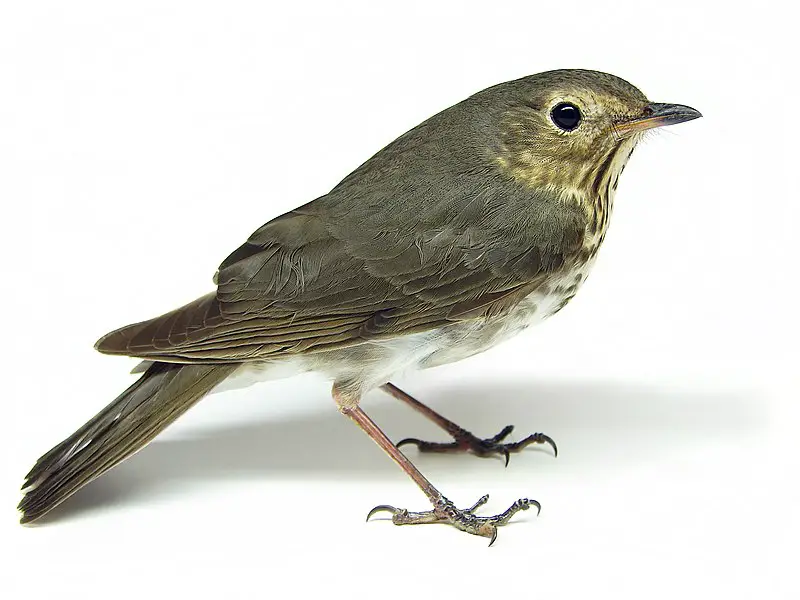
Swainson’s thrush is a medium-sized bird that belongs to the Catharus genus. Its coloration is subdued and its voice has been described as being flute-like, making it an appealing addition to any backyard.
It was named after William Swainson, an English ornithologist from the 19th century. The name of this species comes from Ancient Greek katharos which means “pure” or “clean” – appropriate for such a beautiful creature.
This type of thrush can be found throughout North America in habitats ranging from coniferous forests to open fields with scattered trees and shrubs; they also migrate south during winter months.
Despite their beauty, these birds are declining due to habitat loss and fragmentation so we must work together if we want them around forever.Scientific classification:
| Kingdom | Animalia |
| Phylum | Chordata |
| Class | Aves |
| Order | Passeriformes |
| Family | Turdidae |
| Genus | Catharus |
| Species | C. ustulatus |
36. Common Myna
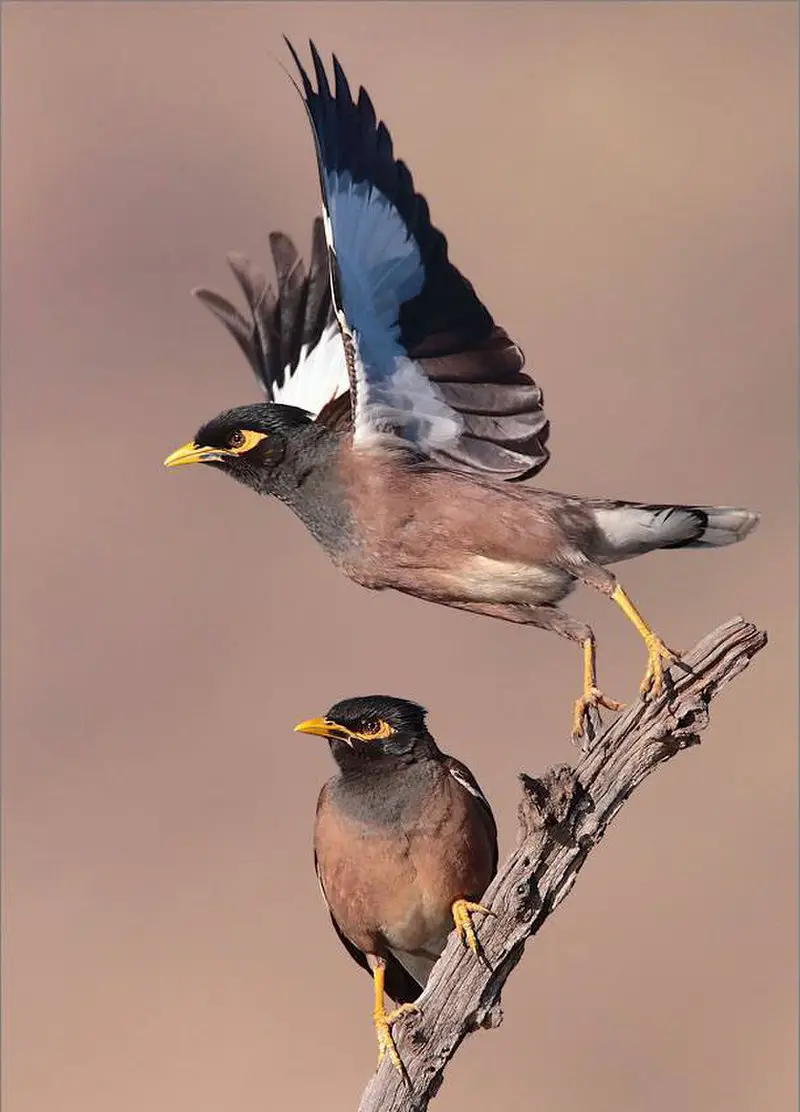
The Common myna is a bird native to Asia and belongs to the Sturnidae family. It has an omnivorous diet, strong territorial instinct and is well adapted to urban environments.
With its range increasing rapidly, it was declared one of the most invasive species by IUCN in 2000. Its distinctive features include black head with a yellow bill, brown body and white tips on wings & tail feathers.
The common myna communicates through loud clicking noises that can easily be heard from long distances in both rural as well as urban areas alike.
They are known for their intelligence; they mimic sounds such as human speech or other birds’ calls making them popular pets among households too.Scientific classification:
| Kingdom | Animalia |
| Phylum | Chordata |
| Class | Aves |
| Order | Passeriformes |
| Family | Sturnidae |
| Genus | Acridotheres |
| Species | A. tristis |
37. Northern Waterthrush
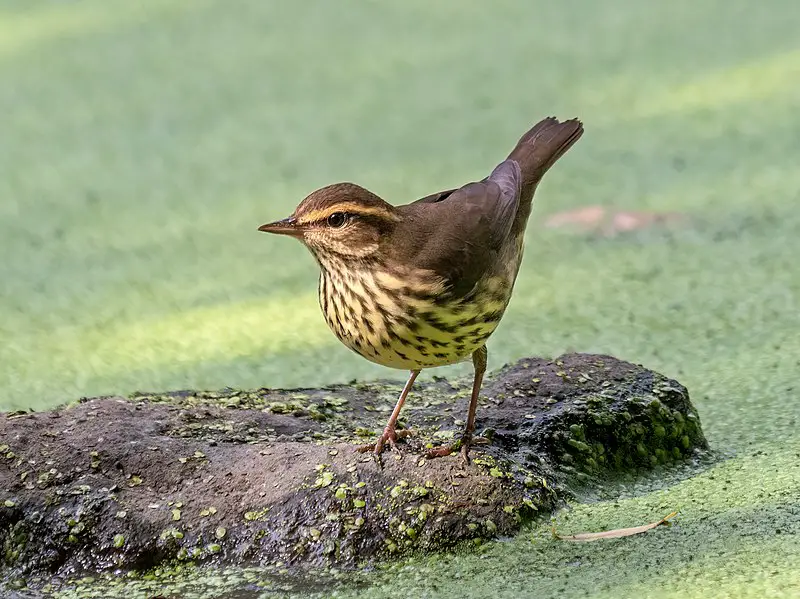
The northern waterthrush (Parkesia noveboracensis) is a small species of migratory New World warbler that breeds in Canada and the northern United States, including Alaska.
During winter it can be found across Central America, as well as parts of South America such as Venezuela, Colombia and Ecuador. It’s a rare vagrant to other regions within South America.
This ground-feeding bird has bright yellow or olive brown upperparts with white streaks down its back along with dark spots on its chestnut coloured throat and breast.
Its belly ranges from light greyish-white to creamy white depending on age; older birds tend towards the latter colouration while juveniles are lighter in tone.
This hardy little creature is able to brave both cold climates during breeding season and also tropical areas when migrating further south for winter months.Scientific classification:
| Kingdom | Animalia |
| Phylum | Chordata |
| Class | Aves |
| Order | Passeriformes |
| Family | Parulidae |
| Genus | Parkesia |
| Species | P. noveboracensis |
38. Marsh Wren
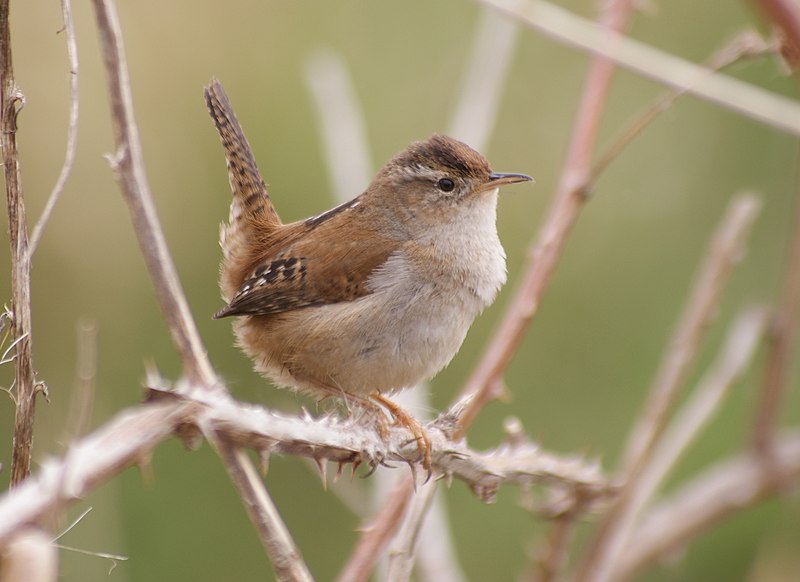
The Marsh Wren is a small bird native to North America, belonging to the wren family. It has a long bill and can be distinguished from other species of marsh birds such as the sedge wren by its size.
The Marsh Wren was first described in 1810 by Alexander Wilson under the binomial name Certhia palustris and now belongs to genus Cistothorus.
This songbird prefers wetland habitats like marshes, swamps or wetlands with dense vegetation for sheltering and nesting activities.
They build nests on grasses near water bodies which are made out of twigs attached at one end forming an enclosed cup-like structure lined with feathers or fur making it look like a woven basket.Scientific classification:
| Kingdom | Animalia |
| Phylum | Chordata |
| Class | Aves |
| Order | Passeriformes |
| Family | Troglodytidae |
| Genus | Cistothorus |
| Species | C. palustris |
39. Winter Wren
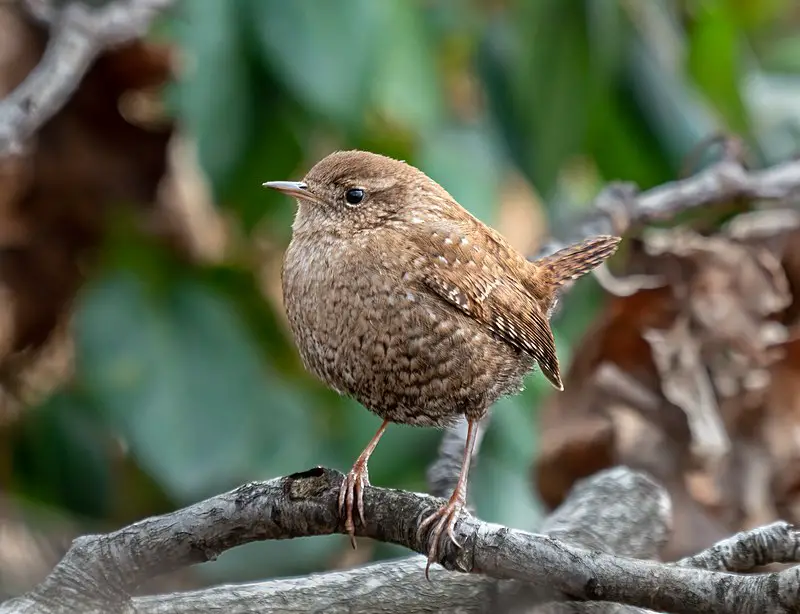
The Winter Wren is a tiny bird belonging to the New World wren family. It can be found in North America, from British Columbia all the way to the Atlantic Ocean.
In winter, it migrates south and sometimes even reaches Central America. Its habitat consists mainly of coniferous forests where it builds its nest on or near ground level within dense vegetation for protection against predators.
This small songbird has a rich brown plumage with white eyebrows and buff underparts which helps them blend into their environment perfectly.
The Winter Wrens are renowned for their loud songs that they sing both day and night during breeding season; making them an integral part of any forest ecosystem.Scientific classification:
| Kingdom | Animalia |
| Phylum | Chordata |
| Class | Aves |
| Order | Passeriformes |
| Family | Troglodytidae |
| Genus | Troglodytes |
| Species | T. hiemalis |
40. American Rosefinch
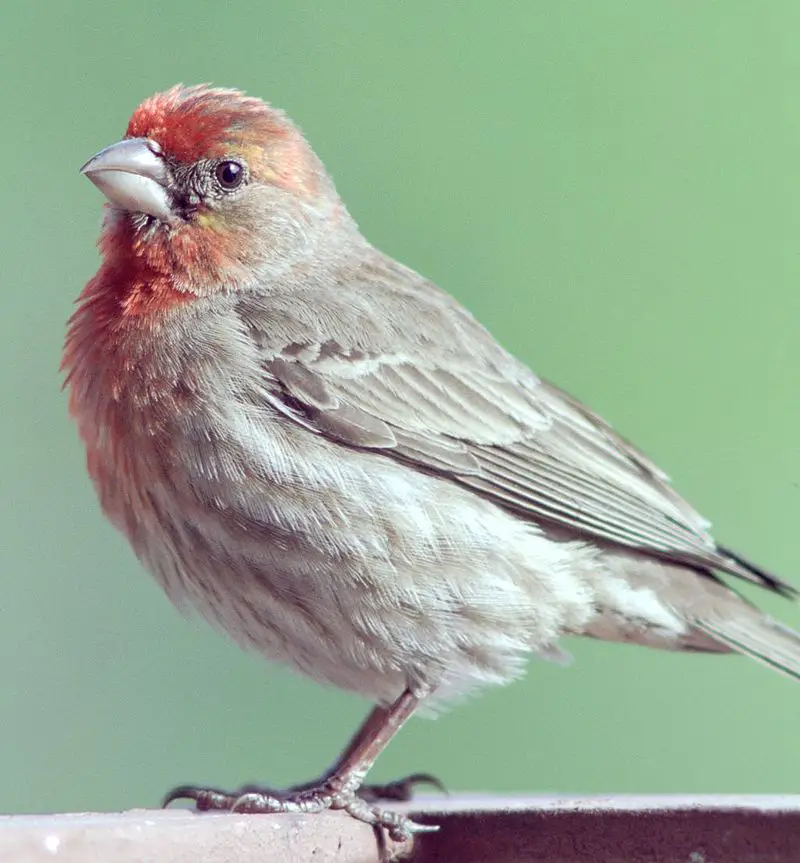
American rosefinches are a type of passerine bird that belongs to the finch family, Fringillidae.
These birds boast striking plumage colours such as various shades of red which gives them their name – ‘Haemorhous’, derived from Greek meaning ‘blood’.
They can be found all across North America, and despite being related to European and Asian Carpodacus rosefinches they are in fact not closely related at all.
The American Rose Finch is known for its long tail feathers and has adapted well to living among humans; it often nests near houses or other structures where food sources are available close by like seeds and fruits.
This lovely little bird will brighten up any garden with its vibrant colouration.Scientific classification:
| Kingdom | Animalia |
| Phylum | Chordata |
| Class | Aves |
| Order | Passeriformes |
| Family | Fringillidae |
| Subfamily | Carduelinae |
| Genus | Haemorhous Swainson, 1837 |
41. Purple Finch

The Purple Finch is a species of finch from North America, belonging to the Fringillidae family.
It’s also known as an “American Rosefinch” due to its resemblance in color and size to some European rosefinches.
Their plumage ranges from pinkish-purple on their heads and wings, with a light brown underside.
They are small birds that measure about 5-6 inches long with short thin beaks for eating seeds and insects.
In addition, they have thick round bodies which help them stay warm during cold winters in the northern parts of their range.
The Purple Finch has adapted well over time making it easier for them to survive even though there are increasing threats posed by humans such as deforestation or habitat destruction caused by development projects near their habitats.Scientific classification:
| Kingdom | Animalia |
| Phylum | Chordata |
| Class | Aves |
| Order | Passeriformes |
| Family | Fringillidae |
| Subfamily | Carduelinae |
| Genus | Haemorhous |
| Species | H. purpureus |
42. Song Thrush
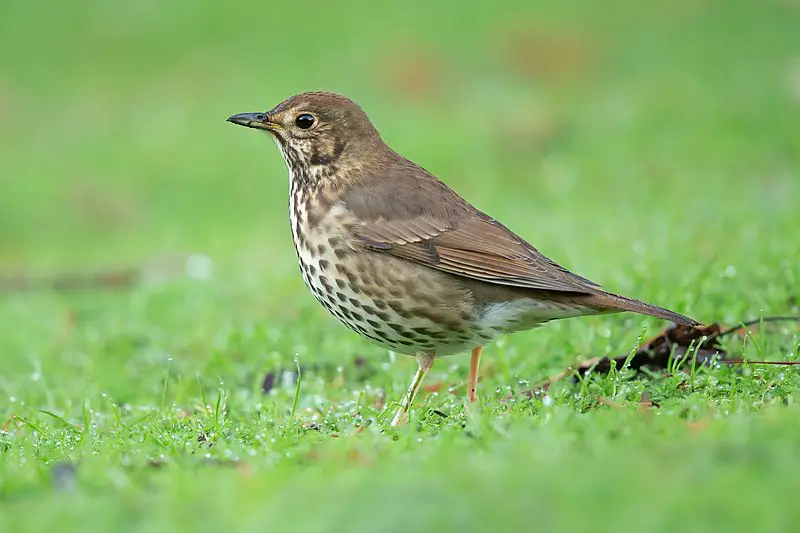
The Song Thrush is a beautiful bird that breeds across the West Palearctic. It has brown upper-parts and creamy or buff underparts with black spots, as well as three recognised subspecies.
Its vocalisations are particularly melodious; its song consists of repeated musical phrases, hence why it has been referenced often in poetry.
This species can be found breeding in forests, gardens and parks during summertime months before migrating elsewhere for winter.
With its attractive plumage and lovely singing voice, it’s no wonder this thrush is so beloved by many.Scientific classification:
| Kingdom | Animalia |
| Phylum | Chordata |
| Class | Aves |
| Order | Passeriformes |
| Family | Turdidae |
| Genus | Turdus |
| Species | T. philomelos |
43. Canyon Towhee
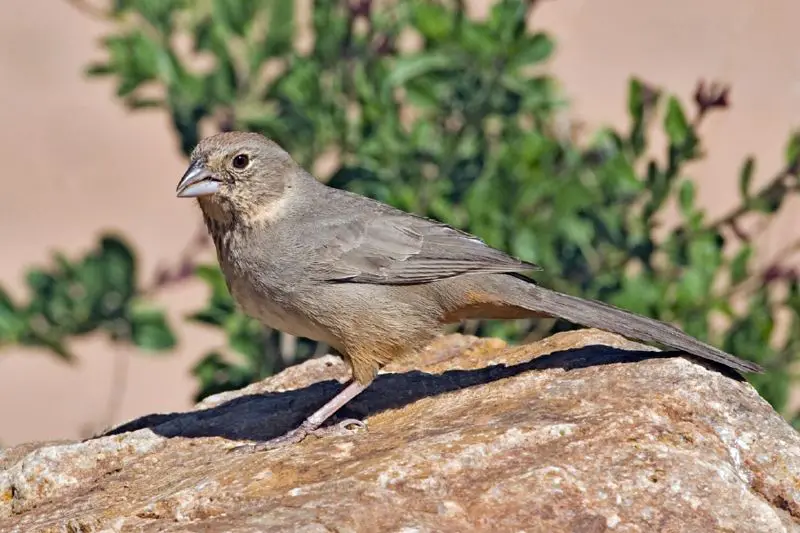
The Canyon Towhee is a small bird belonging to the Passerellidae family. It has an olive-brown head and back, with a greyish white belly and chest. The wings are darker than the body, while its tail feathers are brown in color.
This species resides near dry canyons, hence their name; however it inhabits other woodlands as well. Its diet consists of seeds, fruits, insects and some grasses too.
They generally forage or search for food on ground level but also occasionally pick up food from tree branches or shrubs as well.
During breeding season they engage in courtship displays by bowing low with spread tails that vibrate rapidly before taking flight into the air singing songs all along.Scientific classification:
| Kingdom | Animalia |
| Phylum | Chordata |
| Class | Aves |
| Order | Passeriformes |
| Family | Passerellidae |
| Genus | Melozone |
| Species | M. fusca |
44. Louisiana Waterthrush
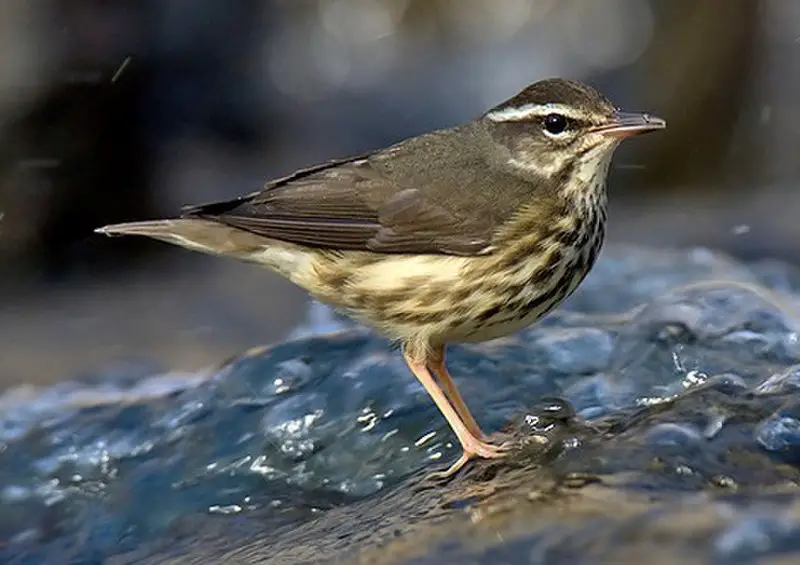
The Louisiana Waterthrush is a small songbird found in North America. It has a brown back, white belly and buff flanks with black streaks on its chest.
This bird prefers wet areas such as streams and their surroundings, where it can feed on aquatic insects or forage along the shoreline of ponds or lakes.
The Louisiana Waterthrush migrates to Central America during winter months but returns to breed in eastern North America during summertime.
Its call sounds like “drip-drop” which helps distinguish it from the Northern waterthrush that makes more of a buzzing sound when calling out for food or mates.Scientific classification:
| Kingdom | Animalia |
| Phylum | Chordata |
| Class | Aves |
| Order | Passeriformes |
| Family | Parulidae |
| Genus | Parkesia |
| Species | P. motacilla |
45. California Thrasher
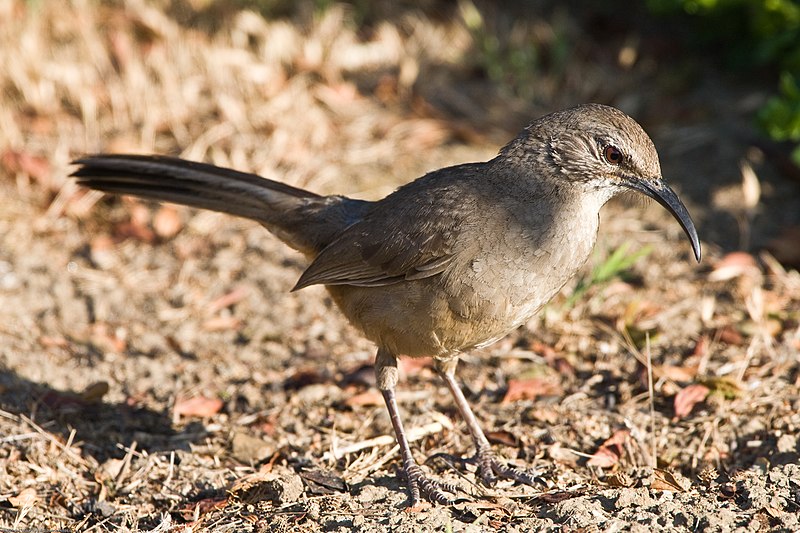
The California thrasher is a member of the Mimidae family and is found in chaparral habitats in both California and Baja California. It has grey-brown upperparts, white underparts with pale streaks, yellow eyes and a black bill.
Its long tail helps it to forage through dense vegetation as well as aiding its agility when climbing trees or shrubs.
The species’ diet consists mainly of insects such as beetles, ants and grasshoppers but can also feed on small fruits like berries or seeds from wildflowers.
It builds an open cup nest out of twigs, stems and leaves which are lined with soft material like feathers or fur near the base of bushes or low tree branches.
This bird forms part of a superspecies along with crissal thrasher (Toxostoma crissale) and LeConte’s thrasher (Toxostoma lecontei).Scientific classification:
| Kingdom | Animalia |
| Phylum | Chordata |
| Class | Aves |
| Order | Passeriformes |
| Family | Mimidae |
| Genus | Toxostoma |
| Species | T. redivivum |
46. Chestnut-Backed Chickadee
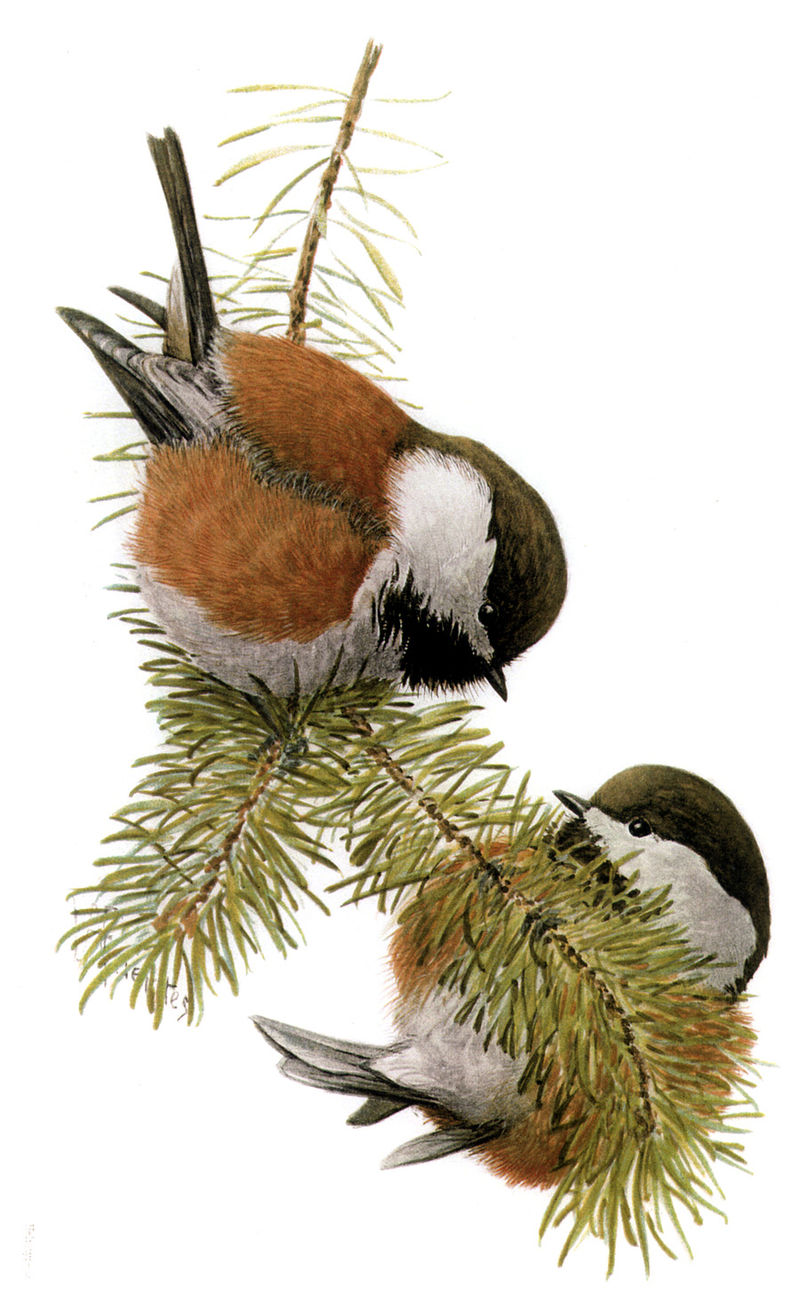
The Chestnut-backed Chickadee is a small passerine bird in the tit family, Paridae. It lives within the Pacific Northwest region of America and Canada; its range extending from southern Alaska to southwestern California.
This species remains a permanent resident throughout its area rather than migrating seasonally, although feeding flocks may temporarily move short distances for food sources.
They are commonly found in woodlands with dense understory vegetation as well as suburban gardens.
The male and female birds can be distinguished by their distinctive patterned plumage: males have brown backs while females are grayer above but both share white bellies and buffy sides striped with black barring across their wings and tails.
These sociable birds usually feed on insects or seeds which they obtain from trees or shrubs using their sharp beaks.Scientific classification:
| Kingdom | Animalia |
| Phylum | Chordata |
| Class | Aves |
| Order | Passeriformes |
| Family | Paridae |
| Genus | Poecile |
| Species | P. rufescens |
47. Meyer’s Parrot
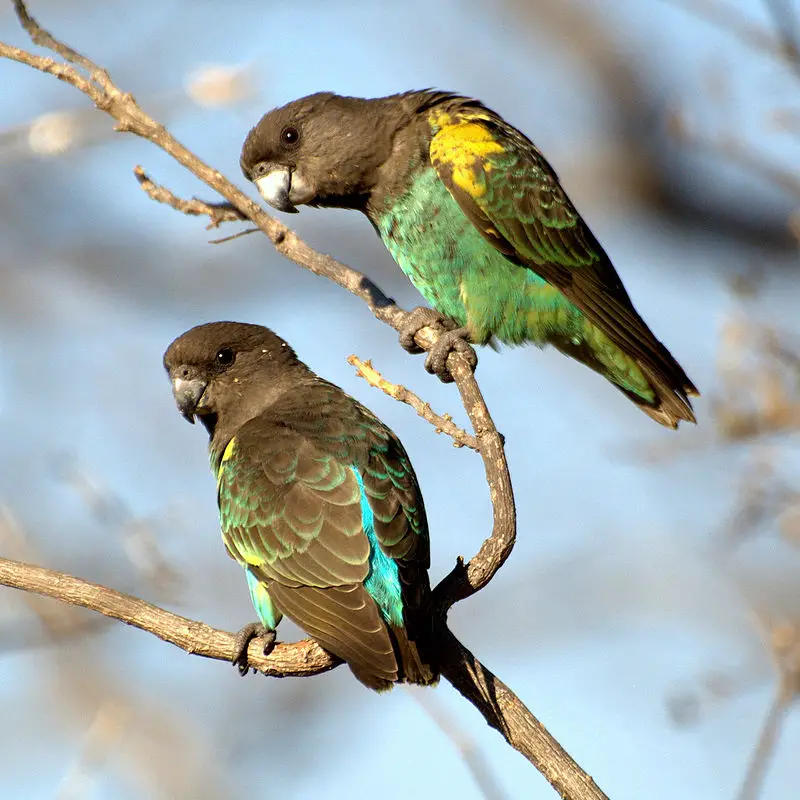
Meyer’s parrot is a species of African parrot with grey feathers, turquoise belly and blue rump. It also has yellow markings on the carpal joint of its wings and some subspecies have additional yellow coloring on their heads.
There are six recognized subspecies that vary in terms of home range, size and markings.
Meyer’s parrots can be found in many countries across Africa including Kenya, Ethiopia, Somalia and Tanzania where they prefer to reside amongst acacia trees near rivers or streams.
They typically feed off fruits such as figs as well as seeds from grasses and herbs which makes them incredibly important for maintaining biodiversity levels in these areas.Scientific classification:
| Kingdom | Animalia |
| Phylum | Chordata |
| Class | Aves |
| Order | Psittaciformes |
| Family | Psittacidae |
| Genus | Poicephalus |
| Species | P. meyeri |
48. Brown-Headed Parrot
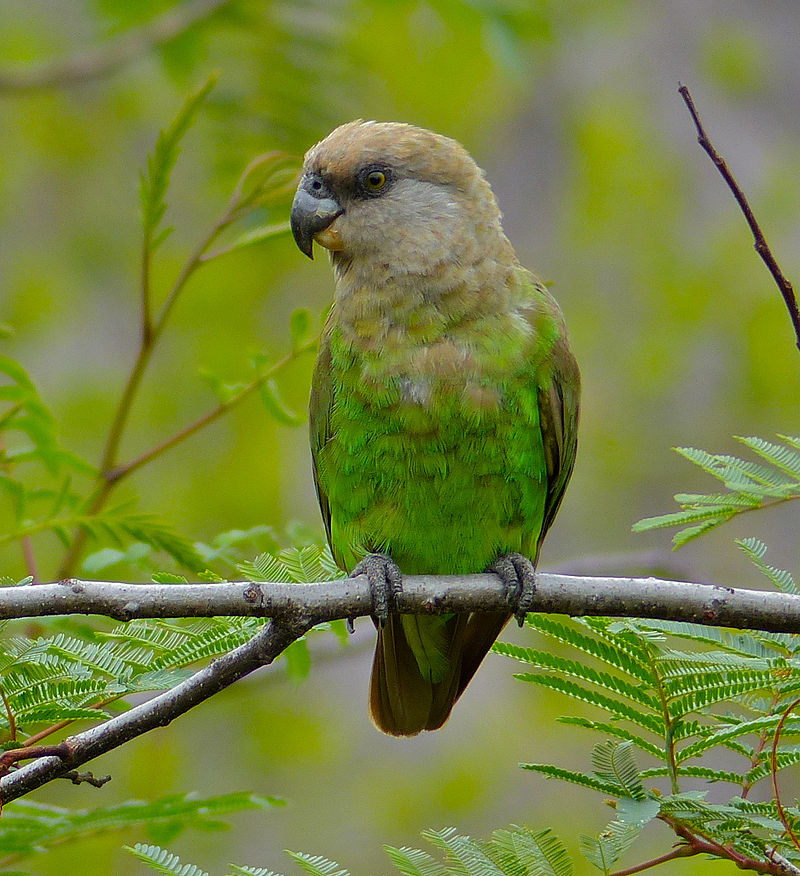
The Brown-headed parrot is a beautiful bird native to South-eastern Africa. It has an overall green plumage, but the wings have bright yellow coverts which inspired its scientific name cryptoxanthus (meaning hidden or concealed yellow).
This small species usually measures around 23 cm in length and weighs between 90 – 120 g.
They are predominantly arboreal birds found living in woodlands, forests and savannas where they can feed on various fruits, seeds and flowers.
These intelligent creatures are often kept as pets because of their ability to mimic human speech.
In addition to this talent they also form strong bonds with their owners making them ideal companions if provided enough mental stimulation through playtime activities like foraging games.Scientific classification:
| Kingdom | Animalia |
| Phylum | Chordata |
| Class | Aves |
| Order | Psittaciformes |
| Family | Psittacidae |
| Genus | Poicephalus |
| Species | P. cryptoxanthus |
Also Featured In: Birds that You’ll Find in Kruger national park,